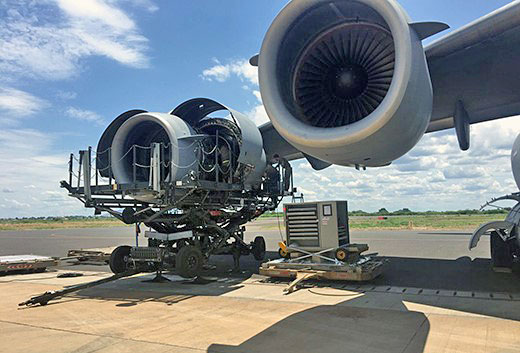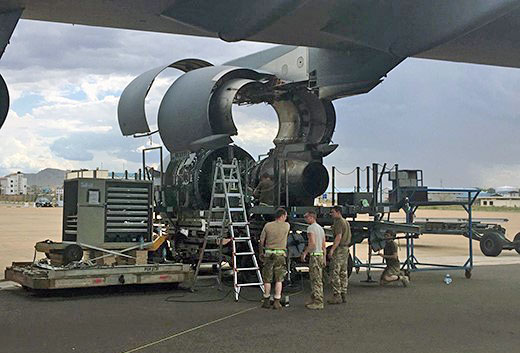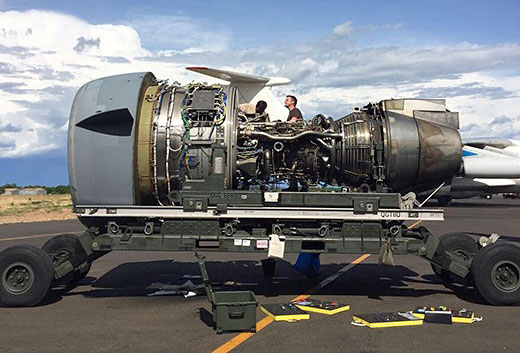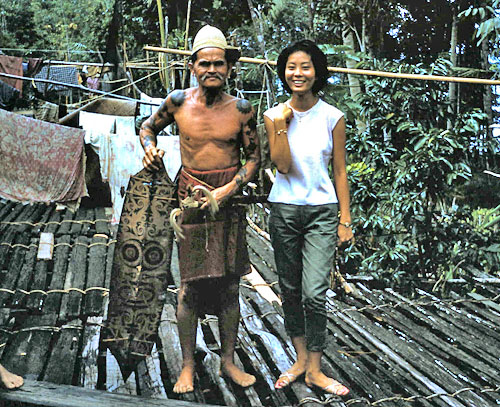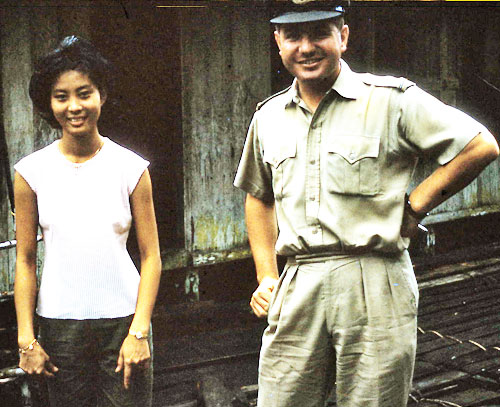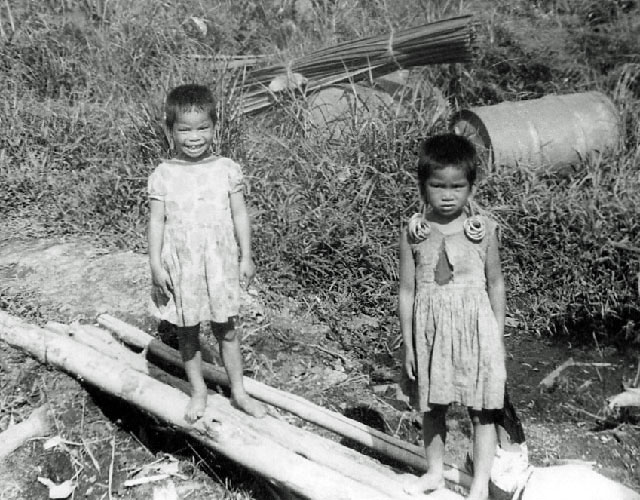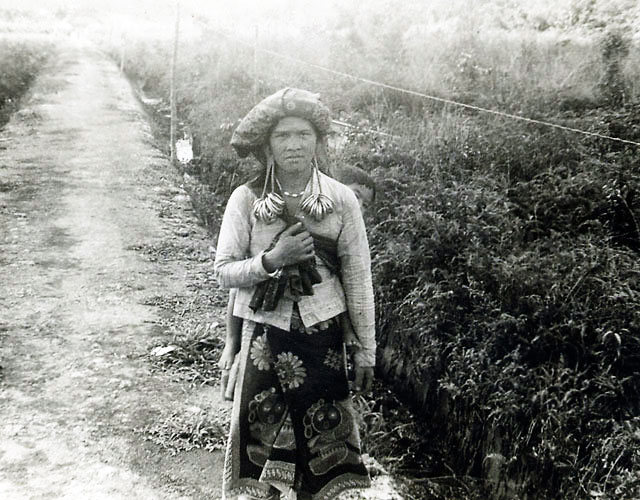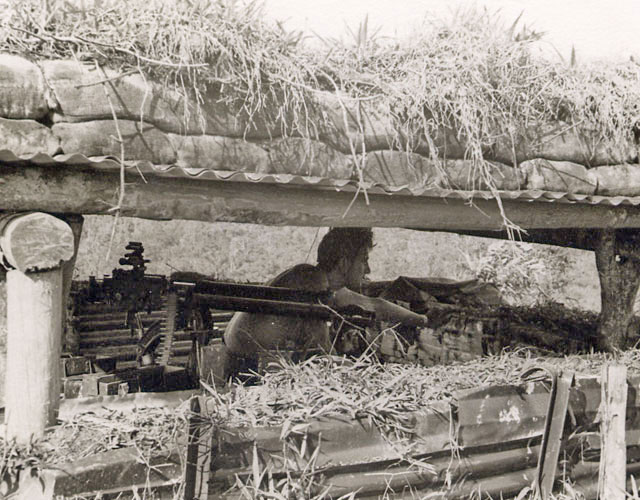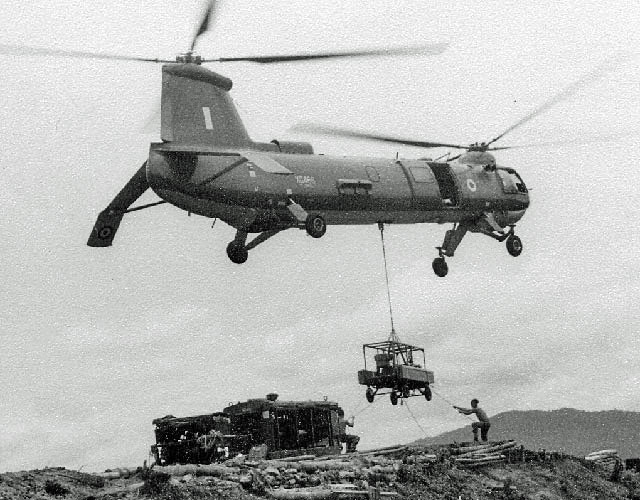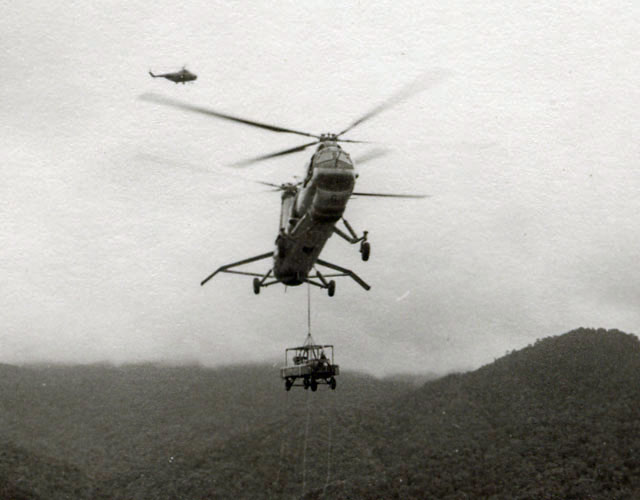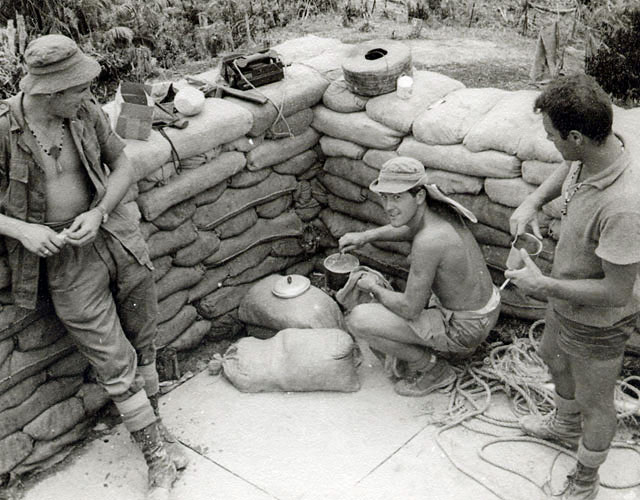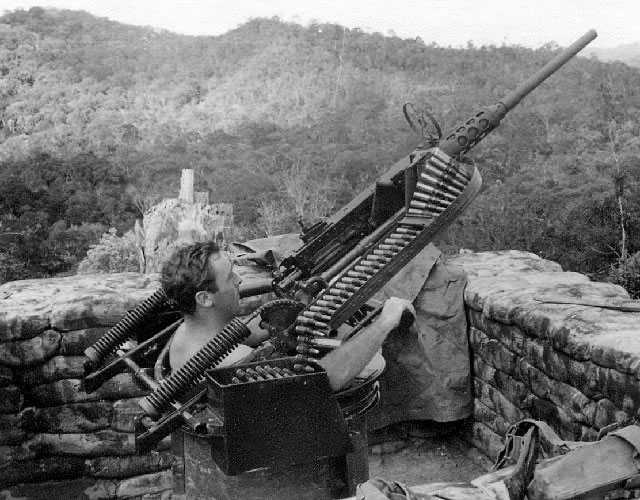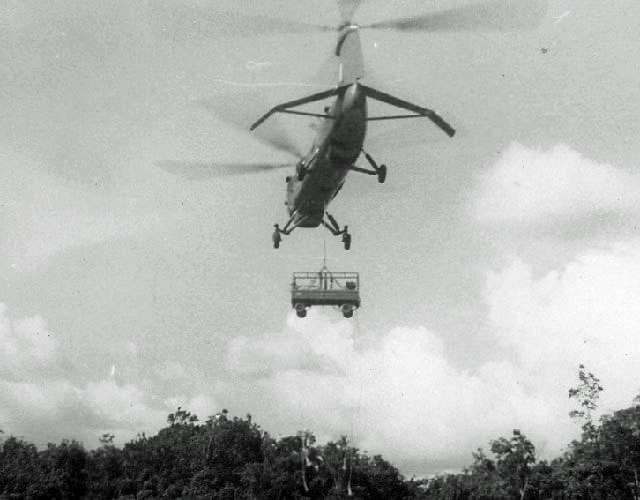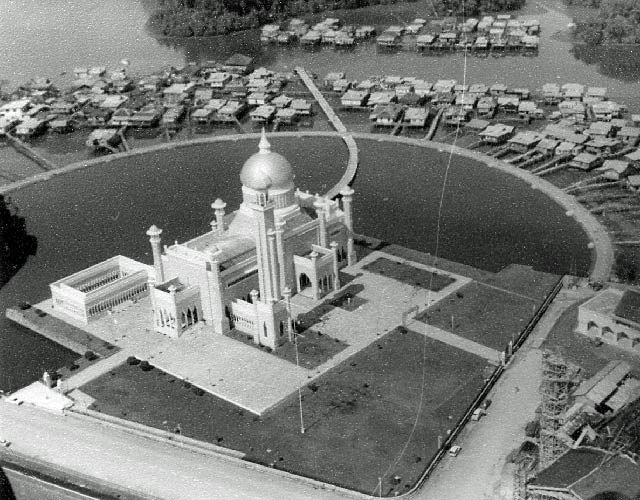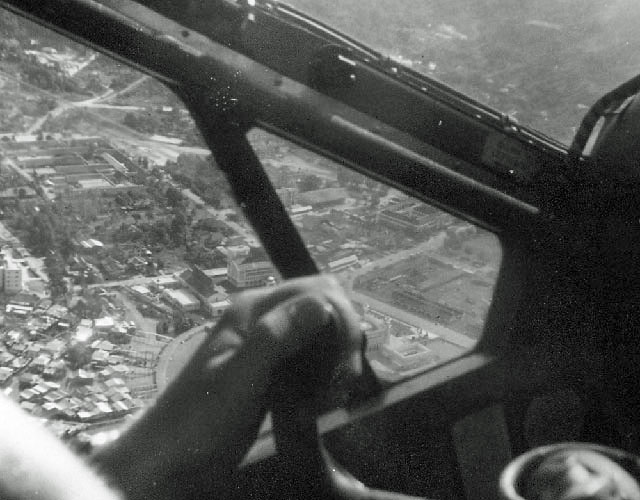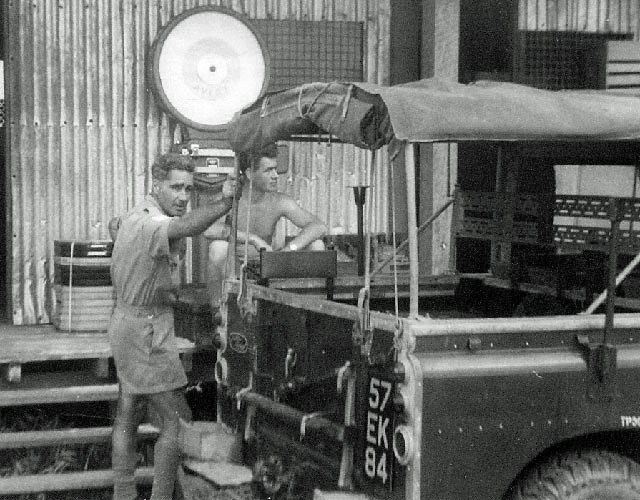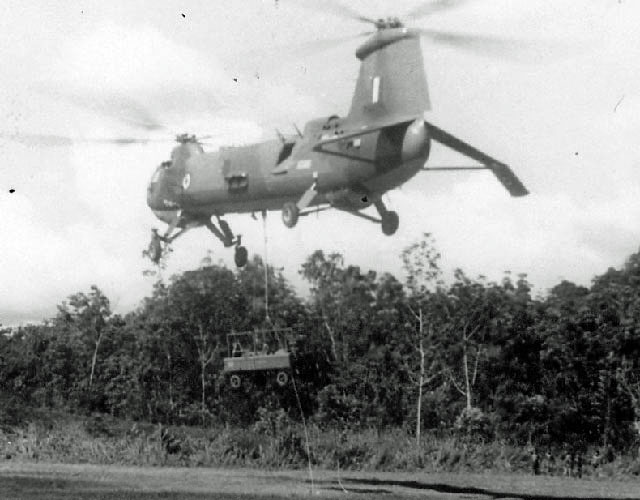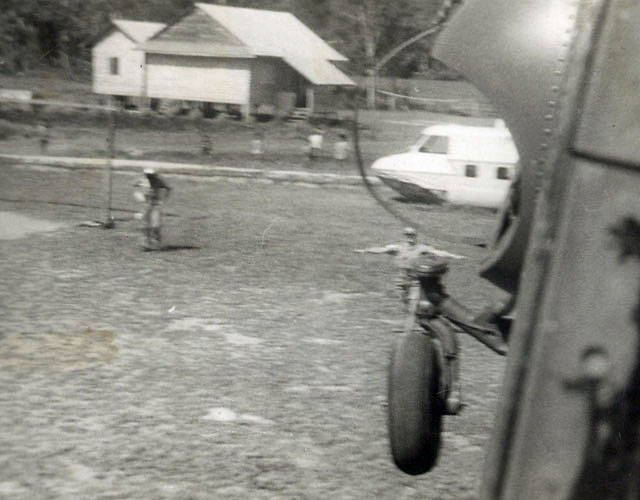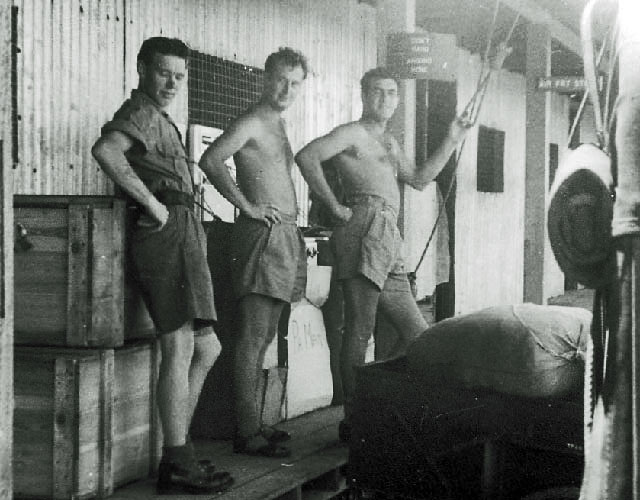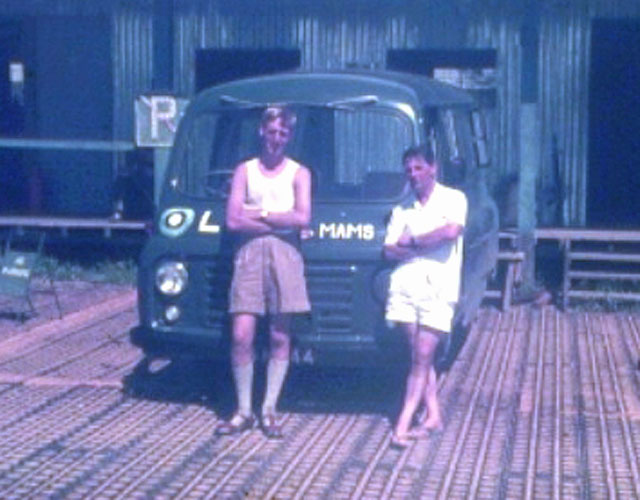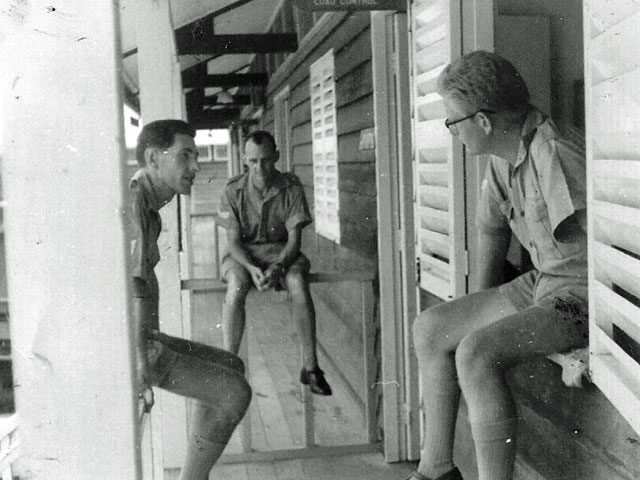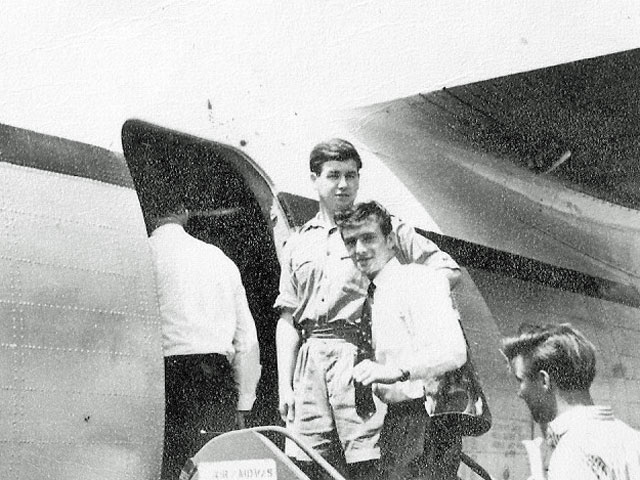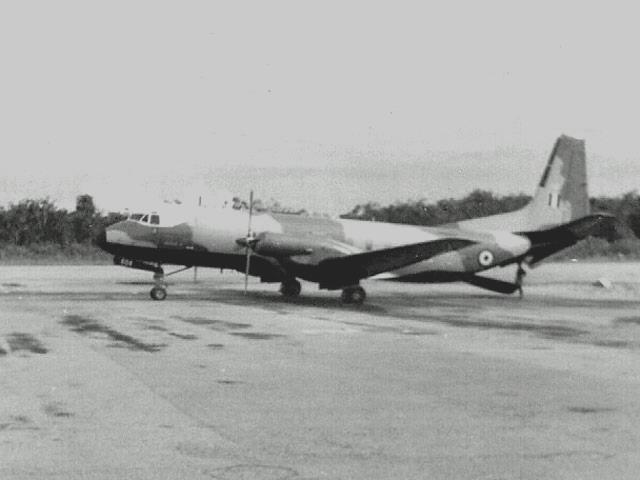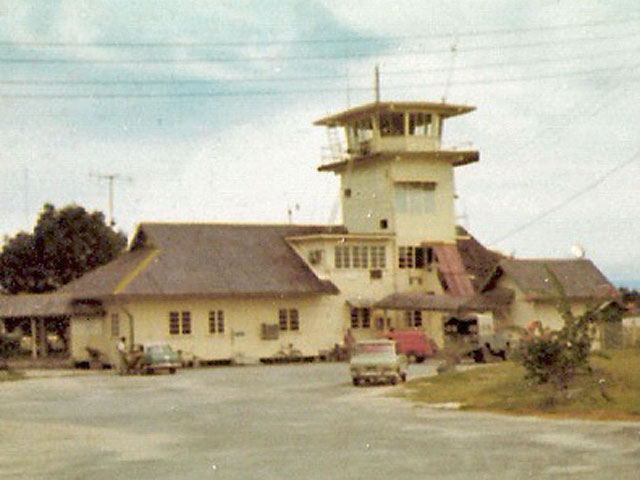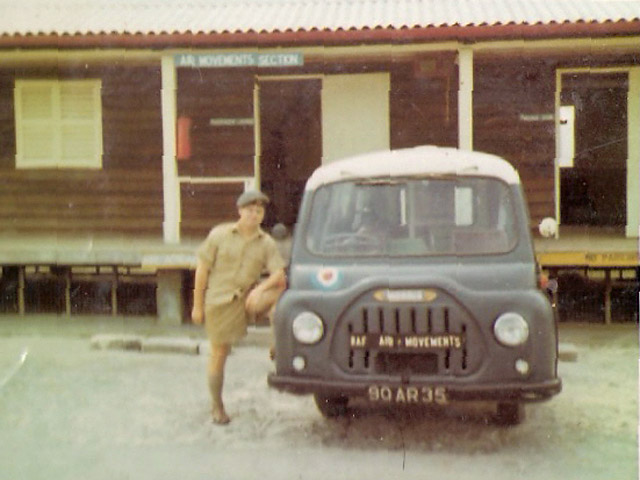




From: Steve Harpum, York, North Yorkshire
Subject: Re: UKMAMS OBA OBB #052617
Hi Tony,
Many thanks indeed for another 'bumper' edition, and as always a pleasure to read.
When I was stationed in Riyadh a few years back we had some leave in Singapore and I could see why everyone who was fortunate enough to be stationed there has such fond memories of the place - I look at all the old black and white pictures and often think they were the hey-day of the RAF.
That said, we visited the Changi Prison Memorial, which is out at the end of the line and near to the present-day prison, and it clearly wasn't always such a lovely place to be for many Service personnel. I found the memorial very moving indeed and gave a me a real 'pause for thought'. We then took the train from Singapore to Bangkok and stopped on the way at the Railway Museum near to the Bridge over the River Kwai - another very sombre few hours.
Keep up the good work,
Best Wishes,
Steve
Subject: Re: UKMAMS OBA OBB #052617
Hi Tony,
Many thanks indeed for another 'bumper' edition, and as always a pleasure to read.
When I was stationed in Riyadh a few years back we had some leave in Singapore and I could see why everyone who was fortunate enough to be stationed there has such fond memories of the place - I look at all the old black and white pictures and often think they were the hey-day of the RAF.
That said, we visited the Changi Prison Memorial, which is out at the end of the line and near to the present-day prison, and it clearly wasn't always such a lovely place to be for many Service personnel. I found the memorial very moving indeed and gave a me a real 'pause for thought'. We then took the train from Singapore to Bangkok and stopped on the way at the Railway Museum near to the Bridge over the River Kwai - another very sombre few hours.
Keep up the good work,
Best Wishes,
Steve

Land 400 CRVs tested for C-17 compatibility
The two Land 400 Phase 2 CRV (Combat Reconnaissance Vehicles) contenders have arrived in Canberra for air transportability trials with Royal Australian Air Force C-17 Globemaster IIIs.
The trials, to be conducted from RAAF Base Fairbairn, form part of the Risk Mitigation Activity (RMA) which is a 12 month test and evaluation program to significantly lower risk to both the Commonwealth and industry in the acquisition and sustainment of the vehicles.
The Rheinmetall Boxer CRV and BAE Systems Australia/Patria AMV35 vehicles will also be on display to officials and the public at Defence Headquarters in Russell on June 20th.
Land 400 Phase 2 is a $4–5 billion project to purchase 225 Combat Reconnaissance Vehicles to replace the Australian Light Armoured Vehicles currently in service with the Australian Army.
australiandefence.com.au
The trials, to be conducted from RAAF Base Fairbairn, form part of the Risk Mitigation Activity (RMA) which is a 12 month test and evaluation program to significantly lower risk to both the Commonwealth and industry in the acquisition and sustainment of the vehicles.
The Rheinmetall Boxer CRV and BAE Systems Australia/Patria AMV35 vehicles will also be on display to officials and the public at Defence Headquarters in Russell on June 20th.
Land 400 Phase 2 is a $4–5 billion project to purchase 225 Combat Reconnaissance Vehicles to replace the Australian Light Armoured Vehicles currently in service with the Australian Army.
australiandefence.com.au
The Rheinmetall Boxer CRV
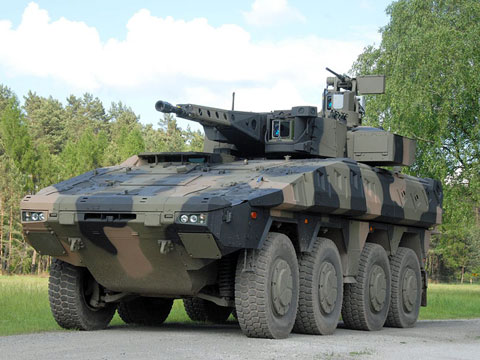
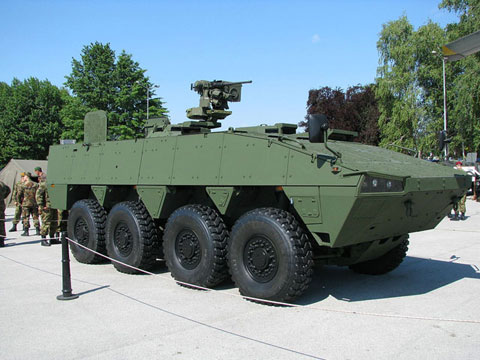
BAE Systems Australia/Patria AMV35

From: David King, Bury St Edmunds, Suffolk
Subject: Memories of Muharraq and Beyond
More memories from Muharraq where I was Pax SNCO on one of the four shifts in 1970. Over a three week period I visited a shop in town where I had seen a nice fountain pen. At the outset the shopkeeper wanted the equivalent of £60 but on my last visit the negotiated price was just £5 at which point I shook his hand!
That evening the VC10 en route to the Far East had as a VIP passenger Lord Carrington, the Defence Secretary. After escorting him and the numerous meeters and greeters into the VIP lounge, I went back to my office to finish the paperwork. I had hardly sat down before the SAMO came rushing in asking if anyone had a fountain pen as the one from the VIP lounge had gone missing and they wanted Lord Carrington to sign the visitor's book. "Please make sure I get this back Sir" I said, foolishly offering up my new acquisition.
When the passengers were on board ready to leave on the next leg, the VIP with the meeters and greeters came out to say farewell. He was on the third step when I realised my Boss hadn’t given me my pen back! I made my way through the throng to the SAMO. When I asked if he had my pen he said "Oh no, I saw him put it into his jacket pocket!"
Subject: Memories of Muharraq and Beyond
More memories from Muharraq where I was Pax SNCO on one of the four shifts in 1970. Over a three week period I visited a shop in town where I had seen a nice fountain pen. At the outset the shopkeeper wanted the equivalent of £60 but on my last visit the negotiated price was just £5 at which point I shook his hand!
That evening the VC10 en route to the Far East had as a VIP passenger Lord Carrington, the Defence Secretary. After escorting him and the numerous meeters and greeters into the VIP lounge, I went back to my office to finish the paperwork. I had hardly sat down before the SAMO came rushing in asking if anyone had a fountain pen as the one from the VIP lounge had gone missing and they wanted Lord Carrington to sign the visitor's book. "Please make sure I get this back Sir" I said, foolishly offering up my new acquisition.
When the passengers were on board ready to leave on the next leg, the VIP with the meeters and greeters came out to say farewell. He was on the third step when I realised my Boss hadn’t given me my pen back! I made my way through the throng to the SAMO. When I asked if he had my pen he said "Oh no, I saw him put it into his jacket pocket!"
Lord Carrington was on the fourth step when I went up to him said, "Sir, I believe, you might have put my pen in your pocket."
"So sorry," he said, "that's a nice pen." and gave it back to me.
I could feel the arrows hitting my back from the assembled farewell party. On getting back into the terminal, an announcement came over the Tannoy, "Sergeant King report to the VIP lounge immediately." When I entered the lounge, the farewell party were finishing their drinks and the station commander was standing at the end of the room, glaring, hands behind his back. As I approached him, he said, "What you did out there was very brave," and he brought a hand from behind his back with a drink in it. “You have earned this!" he said.
"So sorry," he said, "that's a nice pen." and gave it back to me.
I could feel the arrows hitting my back from the assembled farewell party. On getting back into the terminal, an announcement came over the Tannoy, "Sergeant King report to the VIP lounge immediately." When I entered the lounge, the farewell party were finishing their drinks and the station commander was standing at the end of the room, glaring, hands behind his back. As I approached him, he said, "What you did out there was very brave," and he brought a hand from behind his back with a drink in it. “You have earned this!" he said.
Another memory from Muharraq was every weekday at 0800hrs an Argosy departed for Sharjah, Masirah and Salalah. On one occasion the Local Political Agent, a very regular traveller with us, arrived after his aircraft had taxied out. I put him in our Landrover, chased after the Argosy and pulled up in front of it after it had stopped at the end of the runway (all this without my notifying ATC of what I was doing). I used hand signals towards the crew to open the hatch in the nose, which they did, and after the Agent had clambered aboard I went back to the terminal. I am not sure to this day if what I did was the correct way to load passengers, but, on arriving back at the terminal, I discovered that Ops had already been on the phone looking for my blood! All went quiet when the status of the passenger was made known - phew!
When I was tourex from Muharraq I was posted to Joint Service Air Troopng Centre (JSATC) RAF Hendon and was placed at the Britannia Airways check-in facility at the rear of Kings Cross station, where we would process the pax and send them by coach to Luton. I was called out to the front desk one morning to deal with an hysterical Army wife. She had a budgie in a cage and was refusing to go without her pet bird! I took her outside and persuaded her to let the bird go (my reasoning was that there were plenty of flats in the area and the bird would land on someone's windowsill where it would be adopted). When the lady returned to the check-in with an empty cage she was directed to finish checking in and take the coach to Luton. Nobody had the nerve to ask her what the small bulge in her coat pocket was!
Cheers
Dave
Cheers
Dave
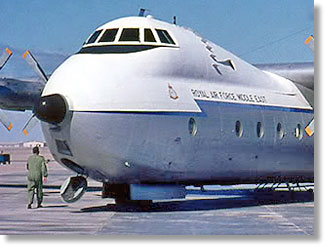

Wheel in the Sky Keeps on Turnin'
"Wheel in the Sky" - sung by Journey
Winter is here again oh lord,
Haven't been home in a year or more
I hope she holds on a little longer.
Sent a letter on a long summer day
Made of silver, not of clay
I've been runnin' down this dusty road
Wheel in the sky keeps on turnin'
I don't know where I'll be tomorrow
Wheel in the sky keeps on turnin'
I've been trying to make it home
Got to make it before too long
I can't take this very much longer
I'm stranded in the sleet and rain
Don't think I'm ever gonna make it home again
The mornin' sun is risin'
It's kissin the day
Oh the wheel in the sky keeps on turnin'
I don't' know where I'll be tomorrow
Ooo the wheel in the sky keeps on turnin'
Winter is here again oh lord,
Haven't been home in a year or more
I hope she holds on a little longer.
Sent a letter on a long summer day
Made of silver, not of clay
I've been runnin' down this dusty road
Wheel in the sky keeps on turnin'
I don't know where I'll be tomorrow
Wheel in the sky keeps on turnin'
I've been trying to make it home
Got to make it before too long
I can't take this very much longer
I'm stranded in the sleet and rain
Don't think I'm ever gonna make it home again
The mornin' sun is risin'
It's kissin the day
Oh the wheel in the sky keeps on turnin'
I don't' know where I'll be tomorrow
Ooo the wheel in the sky keeps on turnin'

RAF C-17 Globemaster Full Engine Change in South Sudan
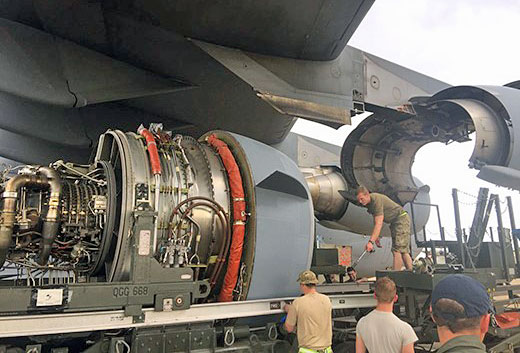
Number 99 Squadron, supported by a contingent of Royal Air Force personnel, have achieved the first full engine change whilst on deployed operations away from RAF Brize Norton.
The C-17 Globemaster suffered a bird strike on departure from Juba international airport, South Sudan. The crew returned back safely to Juba airport and began arrangements to complete the first engine change whilst deployed.
Personnel from Number 99 Squadron, 1 Tactical Police Squadron, II Squadron RAF Regiment and No.1 Air Movements Wing, deployed to complete this major engineering work in three days, and to recover the aircraft as quickly as possible.
The austere airfield had none of the equipment required to complete this task so two C-17s were flown in to airlift everything required for a full engine change, including the hydraulic lifting equipment, ground power set, even down to rivets.
The C-17 Globemaster suffered a bird strike on departure from Juba international airport, South Sudan. The crew returned back safely to Juba airport and began arrangements to complete the first engine change whilst deployed.
Personnel from Number 99 Squadron, 1 Tactical Police Squadron, II Squadron RAF Regiment and No.1 Air Movements Wing, deployed to complete this major engineering work in three days, and to recover the aircraft as quickly as possible.
The austere airfield had none of the equipment required to complete this task so two C-17s were flown in to airlift everything required for a full engine change, including the hydraulic lifting equipment, ground power set, even down to rivets.
Working in the heat of up to 45 degrees the engineering team, three mechanics and two Aircraft Ground Engineers from Number 99 Squadron, replaced the engine in short order. The significant logistical and engineering issues were overcome through effective collaboration between all members of the temporary detachment, which includes personnel from Number 99 Squadron, Force Headquarters at RAF Brize Norton, and the additional support of the personnel based at Juba airport.
Through tenacity and dedication, and demonstrating the RAF mantra of 'Agile, Adaptable, Capable', the damaged C-17 was repaired and recovered in as short a time frame as possible and has since been involved in supporting a number of Defence operational and Exercise commitments.
The aircraft Captain, Squadron Leader Lofthouse, No. 99 Squadron, said, “The crew train for eventualities such as this all the time and we worked together to land the aircraft safely back at Juba. The engineering team should be commended for the first C-17 engine change in an austere location, and to complete the task in just 3 days took exceptional levels of effort and teamwork in difficult conditions.”
Royal Air Force News
Through tenacity and dedication, and demonstrating the RAF mantra of 'Agile, Adaptable, Capable', the damaged C-17 was repaired and recovered in as short a time frame as possible and has since been involved in supporting a number of Defence operational and Exercise commitments.
The aircraft Captain, Squadron Leader Lofthouse, No. 99 Squadron, said, “The crew train for eventualities such as this all the time and we worked together to land the aircraft safely back at Juba. The engineering team should be commended for the first C-17 engine change in an austere location, and to complete the task in just 3 days took exceptional levels of effort and teamwork in difficult conditions.”
Royal Air Force News
From: James Durkin, Stafford, Staffs
Subject: Two Six!
Hi Tony,
I have no idea who came first in this discussion. However, when I was a young LAC Equipment Assistant, serving at 107 MU Kasfareet (sunny Canal Zone 1949-53), I was employed in the Aircraft Servicing and Storage Squadron chasing AOG traffic and general stores etc., for the repair, salvage and storage sections.
We had office accommodation sited between the engineering and storage areas of the wing. At times we could hear the crack of a whip and a very loud shout followed by another call from more than one person. We could watch a group of semi clad local labourers pushing a large engine case (containing an engine on its way to storage or engine change. About 6 or 8 men would push the engine on a selection of what looked like half a dozen wooden rollers. As the load moved forward, a roller at the rear became free and a worker would quickly transfer it from the rear to the front of the load. The foreman (called 'Bass Rice') would crack his whip and shout. Then his team would shout back and restart pushing the load. I asked Sgt. Golder, our boss, what were they shouting and he laughed and said 'two-six'. I never saw the whip used on the workers but was told that it did happen at times. That was the first time I heard 'two-six' used in effort.
At HQ RAF Germany in 1960, I met a Supply WO employed in the Air Bookings Center who related that he had been detached with the Fleet Air Arm on an aircraft carrier during WWII and had seen action in the Mediterranean Sea area. He recalled 'damaged beyond repair aircraft' would be pushed over the side using that shout!
I think the last time I heard 'two-six' being used was at Labuan during the Confrontation campaign when half a dozen or so RN personnel helped load the Admiral's barge to an Argosy, in full freighter role, in order to catch up with his berth on HMS Albion heading for Singapore. Air Movements Section Labuan to the last minute rescue!
Regards
Jimmie
Subject: Two Six!
Hi Tony,
I have no idea who came first in this discussion. However, when I was a young LAC Equipment Assistant, serving at 107 MU Kasfareet (sunny Canal Zone 1949-53), I was employed in the Aircraft Servicing and Storage Squadron chasing AOG traffic and general stores etc., for the repair, salvage and storage sections.
We had office accommodation sited between the engineering and storage areas of the wing. At times we could hear the crack of a whip and a very loud shout followed by another call from more than one person. We could watch a group of semi clad local labourers pushing a large engine case (containing an engine on its way to storage or engine change. About 6 or 8 men would push the engine on a selection of what looked like half a dozen wooden rollers. As the load moved forward, a roller at the rear became free and a worker would quickly transfer it from the rear to the front of the load. The foreman (called 'Bass Rice') would crack his whip and shout. Then his team would shout back and restart pushing the load. I asked Sgt. Golder, our boss, what were they shouting and he laughed and said 'two-six'. I never saw the whip used on the workers but was told that it did happen at times. That was the first time I heard 'two-six' used in effort.
At HQ RAF Germany in 1960, I met a Supply WO employed in the Air Bookings Center who related that he had been detached with the Fleet Air Arm on an aircraft carrier during WWII and had seen action in the Mediterranean Sea area. He recalled 'damaged beyond repair aircraft' would be pushed over the side using that shout!
I think the last time I heard 'two-six' being used was at Labuan during the Confrontation campaign when half a dozen or so RN personnel helped load the Admiral's barge to an Argosy, in full freighter role, in order to catch up with his berth on HMS Albion heading for Singapore. Air Movements Section Labuan to the last minute rescue!
Regards
Jimmie
From: George Graves, Carlisle
Subject: Shouting 2-6
Hi Tony and all,
Regards using the numbers 2-6 when moving. I believe it means bloody fast; B being the second letter in the alphabet and F being the sixth!
Best wishes,
George
Subject: Shouting 2-6
Hi Tony and all,
Regards using the numbers 2-6 when moving. I believe it means bloody fast; B being the second letter in the alphabet and F being the sixth!
Best wishes,
George

Embraer KC390 to visit New Zealand next month
Embraer will demonstrate its KC-390 airlifter in New Zealand next month in support of its bids for the Royal New Zealand Air Force’s future air mobility and future air surveillance capability requirements.
The aircraft is due in New Zealand in mid-July as part of a 10-country demonstration tour following this week’s Paris Airshow.
It will be shown to the RNZAF in support of the Brazilian manufacturer’s bids to meet New Zealand’s airlift and maritime surveillance requirements to replace the C-130H and 757 transports and the P-3K2 Orion maritime surveillance aircraft.
“We have solutions for both … and we decided to bid for both,” Embraer Defence & Security chief executive officer Jackson Schneider told Australian Aviation at the Paris Airshow on Wednesday.
The aircraft is due in New Zealand in mid-July as part of a 10-country demonstration tour following this week’s Paris Airshow.
It will be shown to the RNZAF in support of the Brazilian manufacturer’s bids to meet New Zealand’s airlift and maritime surveillance requirements to replace the C-130H and 757 transports and the P-3K2 Orion maritime surveillance aircraft.
“We have solutions for both … and we decided to bid for both,” Embraer Defence & Security chief executive officer Jackson Schneider told Australian Aviation at the Paris Airshow on Wednesday.
Embraer is offering the KC-390 for the RNZAF’s airlift requirement but won’t confirm if it is offering the KC-390 or a variant of the E195 airliner for the maritime surveillance role. “In maritime patrol we can offer solutions with the KC-390 or even offer solutions with the E195. Both are very efficient platforms to meet maritime patrol needs,” Schneider said.
But what mission system a maritime surveillance configured KC-390 or E195 would be fitted with Embraer won’t reveal. “How I address the need this is something I don’t want to [disclose] but I have the possibility to offer solutions with both platforms.”
Meanwhile the Brazilian air force is due to receive the first of 28 KC-390s it has on order in early 2018, while Portugal has announced plans to order five. “We had the very positive announcement from the Portuguese government that it will buy five units, we will have that contract signed this year,” Schneider said. As for the potential for other international sales, “I’m very positive”.
To date the two KC-390 development aircraft have flown over 1,000 flight hours. “We’ve fulfilled many phases and stages of the test [campaign], up ’til now everything is according to the plan and we’re very satisfied with that. In fact in some specific analysis we are getting even better [performance] figures than planning forecast,” Schneider said. “We are proving that what we said we would do we will do.”
Prior to the airshow the KC-390 was demonstrated in Sweden, while following the show it is due to be demonstrated in Europe, the Middle East and South East Asia. The aircraft won’t be demonstrated in Australia as part of the current tour.
australianaviation.com.au
But what mission system a maritime surveillance configured KC-390 or E195 would be fitted with Embraer won’t reveal. “How I address the need this is something I don’t want to [disclose] but I have the possibility to offer solutions with both platforms.”
Meanwhile the Brazilian air force is due to receive the first of 28 KC-390s it has on order in early 2018, while Portugal has announced plans to order five. “We had the very positive announcement from the Portuguese government that it will buy five units, we will have that contract signed this year,” Schneider said. As for the potential for other international sales, “I’m very positive”.
To date the two KC-390 development aircraft have flown over 1,000 flight hours. “We’ve fulfilled many phases and stages of the test [campaign], up ’til now everything is according to the plan and we’re very satisfied with that. In fact in some specific analysis we are getting even better [performance] figures than planning forecast,” Schneider said. “We are proving that what we said we would do we will do.”
Prior to the airshow the KC-390 was demonstrated in Sweden, while following the show it is due to be demonstrated in Europe, the Middle East and South East Asia. The aircraft won’t be demonstrated in Australia as part of the current tour.
australianaviation.com.au

From: Anonymous Traveller, Wiltshire
Subject: Recent Photos from Singapore
Subject: Recent Photos from Singapore
Hi Tony,
Have just seen the latest OBB and the items about Changi. By coincidence I have just returned from a trip to Singapore. I have attached some photos which might be of interest to those who were there.
A couple of people mentioned the price of drinks. Well a beer is now in the region of SGD $10 – 14 for a pint. At the current exchange rate that is about £5.50 - £8.00.
Cheers!
Have just seen the latest OBB and the items about Changi. By coincidence I have just returned from a trip to Singapore. I have attached some photos which might be of interest to those who were there.
A couple of people mentioned the price of drinks. Well a beer is now in the region of SGD $10 – 14 for a pint. At the current exchange rate that is about £5.50 - £8.00.
Cheers!
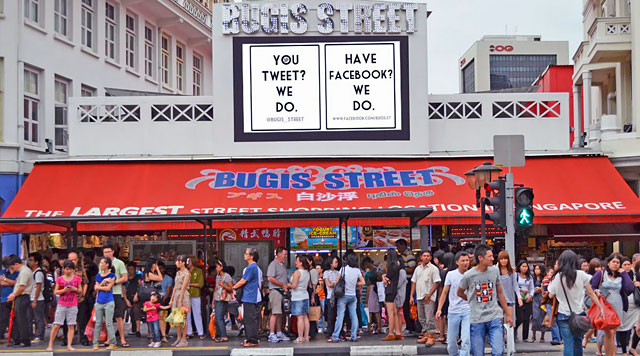
Bugis Street Market is one of the biggest, cheapest and probably hottest places to come shopping in the whole of Singapore. Fifty years ago, this now famous shopping district was better known for being Singapore’s centre of seedy nightlife, attracting transvestites and workers of the night who would flock into town to entertain the visiting military men.
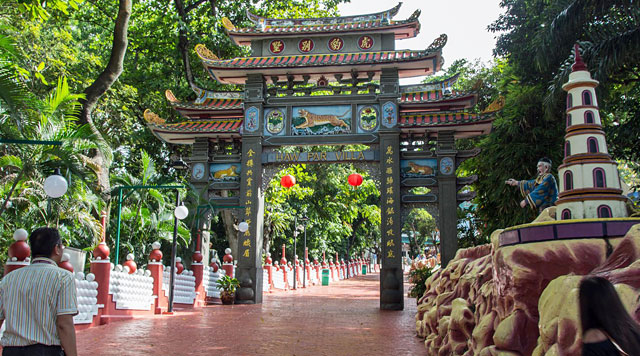
Haw Par Villa, originally called Tiger Balm Gardens, was built in 1937 by the Burmese-Chinese brothers Aw Boon Haw and Aw Boon Par, the developers of Tiger Balm, as a venue for teaching traditional Chinese values. It was modernised in 1986, creating an 'oriental Disneyland', a theme park meeting Western technology with Eastern mythology.
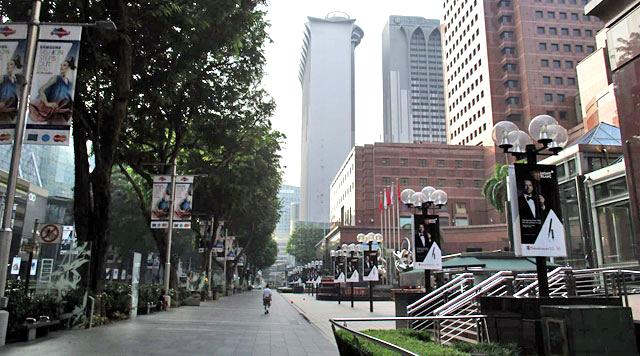
Orchard Road in Singapore is flanked by hotels and pedestrian shopping centres housing numerous upmarket restaurants, coffee chains, cafés and nightclubs. It is the site of the official residence and office of the President of Singapore, the Istana. The current President of Singapore is Tony Tan Keng Yam, since 1 September, 2011.
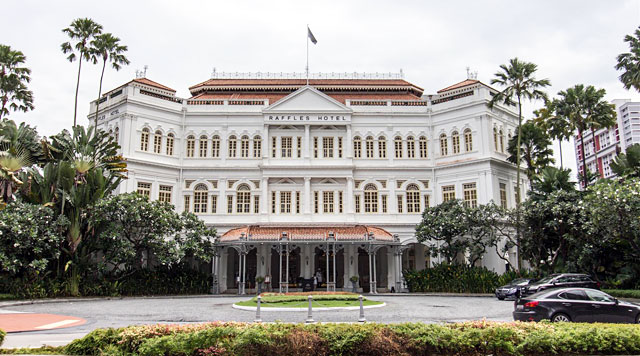
Raffles Hotel is a colonial-style luxury hotel in Singapore. It was established by Armenian hoteliers, the Sarkies Brothers, in 1887. The hotel was named after British statesman Sir Thomas Stamford Raffles, the founder of Singapore. It is the flagship property of Raffles Hotels & Resorts, a subsidiary of Fairmont Raffles Hotels International.
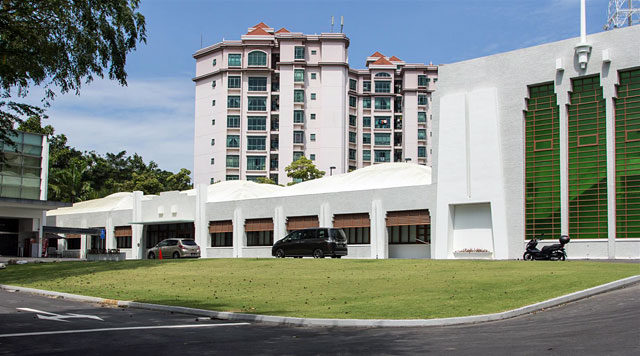
In the foreground is The Old Ford Motor Factory, an historic building in Bukit Batok, Singapore, located along Upper Bukit Timah Road. It is the place where British forces under Lieutenant-General Arthur Percival surrendered to Japanese forces under Lieutenant-General Yamashita Tomoyuki on 15 February 1942 after the Battle of Singapore.
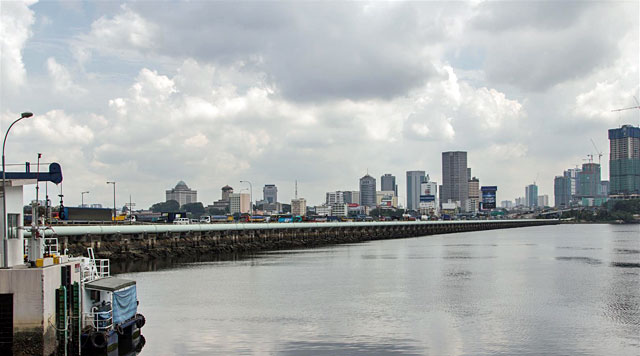
The Johor–Singapore Causeway (Malay: Tambak Johor) is a 1056-metre causeway that links the city of Johor Bahru in Malaysia across the Straits of Johor to the town of Woodlands in Singapore. It serves as a road and rail link, as well as water piping into Singapore.
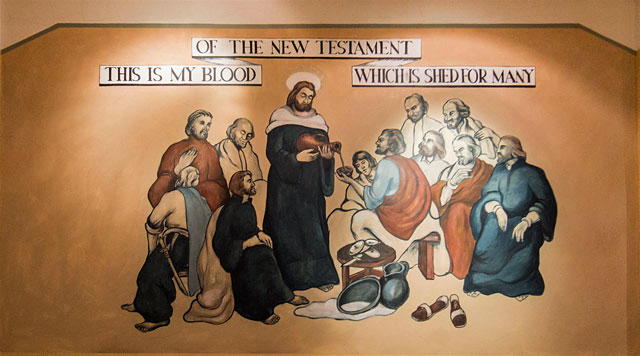
One of five paintings of a biblical theme, the Changi Murals were painted by Stanley Warren, a British bombardier and POW interned at the Changi Prison, during the Japanese occupation of Singapore in World War II. His murals were completed under difficult conditions of sickness, limited materials and hardships.
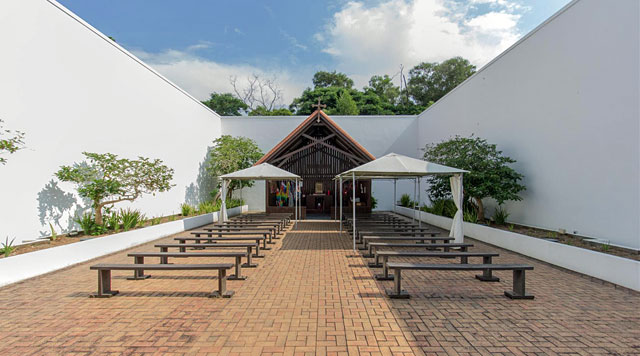
Changi Chapel - In 1988, Singapore built a replica chapel (which was built by the POWs) and museum next to the Changi Prison. When Changi Prison was expanded in 2001, the chapel and museum were relocated to a new site 1 km away and the Changi Chapel and Museum were officially established 15 February 2001.
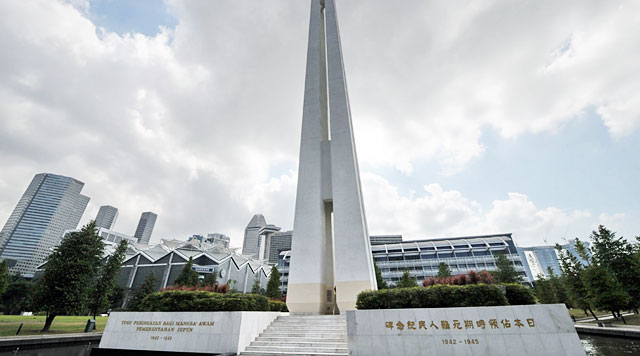
The Civilian War Memorial is located at the center of War Memorial Park as a memorial to civilians who died in Singapore during World War II. The parkland is located along Beach Road in the Downtown Core of Singapore's Central Region. It is managed by the National Parks Board.
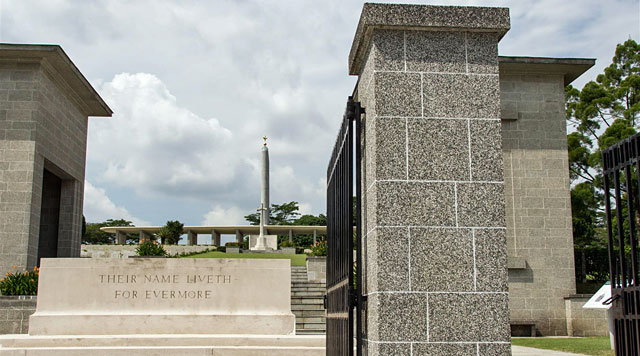
The Kranji War Cemetery is located in Kranji, Singapore, and is the final resting place for Allied soldiers who perished during the Battle of Singapore and the subsequent Japanese occupation of the island from 1942–1945 and in other parts of Southeast Asia during World War II.

From: Jim Aitken, Sunshine Coast, QLD
Subject: Re: UKMAMS OBA OBB #052617
Hi Tony,
I fully expected to read Jack Riley's exploits while serving at Changi on two postings, one after the war in the Far East and a second posting some 8 years later. I was under the impression that the stuff I had read was on the OBA website but after a search I discovered that it was actually on Jack's own website. What a pity this was missed from the recent newsletter as Jack was a very early Mover and in fact established both AMS's at Butterworth and Labuan. Could the attached extract from Jack's website be added in the next newsletter?
Subject: Re: UKMAMS OBA OBB #052617
Hi Tony,
I fully expected to read Jack Riley's exploits while serving at Changi on two postings, one after the war in the Far East and a second posting some 8 years later. I was under the impression that the stuff I had read was on the OBA website but after a search I discovered that it was actually on Jack's own website. What a pity this was missed from the recent newsletter as Jack was a very early Mover and in fact established both AMS's at Butterworth and Labuan. Could the attached extract from Jack's website be added in the next newsletter?
Extract from the website of S/Ldr Jack Riley (d)
(past Honorary Chairman of UKMAMS OBA)
(past Honorary Chairman of UKMAMS OBA)
Temple Hill - As a young Flying Officer I found myself quartered in Temple Hill Mess which stands high on the hill overlooking the Straits and the island of Pulau Ubin. An imposing building, it boasts a stone colonnade and portico with lofty rooms and verandahs largely open to the elements. It was a cool and airy home.
The smallest and busiest room was, of course, the bar where we gathered, especially when Padre Macglashan, the Other Denominations padre, was in full flight with his never-ending fund of stories, all repeatable. Normally full, it was packed to overflowing whenever a red-mud-coated Dakota arrived from Australia with its cargo of Swan Lager.
The bar's best customer was one, Pilot Officer Lim. When new and cocky aircrew arrived it was the custom of their Squadron Commander to teach them their place in the pecking order by inspecting their Flying Log books. He would then reach into his drawer, take out P.O.Lim's log book and throw it on the desk saying, the while...." Even the Squadron dog's got more flying hours than you lot!" And he had. Somewhere I have a photo of a Dakota in supply-dropping mode with the door removed. Propped up in the door stand the crew of three in flying overalls. In the cockpit, complete with flying helmet was one P.O. Lim. I never knew him to miss the aircrew bus from mess to airfield when his crew was flying. He had his own beer dish, seldom empty.
Passenger and Freight - The forerunners of Air Movements Sections were known as the Passenger and Freight Section, even though all mails were handled as well. At Changi we were to be found on the ground floor of one of the Japanese built double-decker wooden buildings alongside the Shell Depot and opposite the Post Office. A Quonset-type building alongside provided the passenger lounge.
In my time Flt.Lt. Doug Peters was the boss. Bill Regan, Don Queenboro and I were the Duty Air Movements Officers (DAMO's). Each shift included a Sergeant or Corporal with a couple of airmen with handling parties provided by local Chinese and Malays. They were very skilful and hard-working.
We had a so-called MT Section attached to us but in practice everyone drove just about anything. In my time there I found myself driving Bedford 3-tonners, Fordson 15cwts (with crash gear box ), aircrew coaches, Coles cranes, fork-lift trucks and the ubiquitous Jeep.
There was also a local Customs Office. We rarely saw them but when they did appear they had clearly been tipped off. The DAMO was usually first to board an arriving aircraft. On one occasion the Customs Officer pushed ahead of me, walked down the gangway of the York, took a screwdriver from his pocket, unscrewed a panel and revealed the contraband!
At first we were handling Hastings and Yorks arriving from, and departing to the UK, with Dakotas and Valettas flying to Kuala Lumpur and on to Butterworth and the Kai Tak Courier which flew via Saigon to Hong Kong and then on to serve the occupation forces in Japan at Iwakuni, returning via Clark Field.
Based at Changi we had 48 and 52 Squadrons( RAF), 38 Sqn (RAAF), 41 Sqn (RNZAF) and the Far East Communications Squadron. The reader will see that we were busy.
In my time Flt.Lt. Doug Peters was the boss. Bill Regan, Don Queenboro and I were the Duty Air Movements Officers (DAMO's). Each shift included a Sergeant or Corporal with a couple of airmen with handling parties provided by local Chinese and Malays. They were very skilful and hard-working.
We had a so-called MT Section attached to us but in practice everyone drove just about anything. In my time there I found myself driving Bedford 3-tonners, Fordson 15cwts (with crash gear box ), aircrew coaches, Coles cranes, fork-lift trucks and the ubiquitous Jeep.
There was also a local Customs Office. We rarely saw them but when they did appear they had clearly been tipped off. The DAMO was usually first to board an arriving aircraft. On one occasion the Customs Officer pushed ahead of me, walked down the gangway of the York, took a screwdriver from his pocket, unscrewed a panel and revealed the contraband!
At first we were handling Hastings and Yorks arriving from, and departing to the UK, with Dakotas and Valettas flying to Kuala Lumpur and on to Butterworth and the Kai Tak Courier which flew via Saigon to Hong Kong and then on to serve the occupation forces in Japan at Iwakuni, returning via Clark Field.
Based at Changi we had 48 and 52 Squadrons( RAF), 38 Sqn (RAAF), 41 Sqn (RNZAF) and the Far East Communications Squadron. The reader will see that we were busy.
In those days all Aircraft Weight and Balance Sheets, Load Sheets, and passenger, cargo and mail manifests were prepared by hand. All passengers and their baggage were weighed. For an aircraft flying down the route to UK a virtual sea of paper was needed, in umpteen copies.
For the unititiated perhaps a word of explanation is necessary. An aircraft only flies if its centre of gravity is within certain limits.When it is manufactured it has its own C of G. Every major modification (example fitting or removal of seats) can change this. Every passenger and box of cargo alters it, depending on where it is placed in the aircraft. But the big problem is fuel. It offers one C of G on take-off but this changes throughout the flight as fuel is consumed. All this has to be calculated by the Air Movements staff using long multiplication... no calculators in those days... It became a matter of pride that the aircrews, whose lives were at stake, came to trust us. Modesty forbids me to mention that they nicknamed me "Ace".
(As a diversion, during the Berlin Airlift, Don Skeen landed his Dakota complaining to the groundcrew that the controls were sluggish. It transpired that he'd got himself into the wrong queue and had flown in a York load.)
For the unititiated perhaps a word of explanation is necessary. An aircraft only flies if its centre of gravity is within certain limits.When it is manufactured it has its own C of G. Every major modification (example fitting or removal of seats) can change this. Every passenger and box of cargo alters it, depending on where it is placed in the aircraft. But the big problem is fuel. It offers one C of G on take-off but this changes throughout the flight as fuel is consumed. All this has to be calculated by the Air Movements staff using long multiplication... no calculators in those days... It became a matter of pride that the aircrews, whose lives were at stake, came to trust us. Modesty forbids me to mention that they nicknamed me "Ace".
(As a diversion, during the Berlin Airlift, Don Skeen landed his Dakota complaining to the groundcrew that the controls were sluggish. It transpired that he'd got himself into the wrong queue and had flown in a York load.)
The Korean War - The outbreak of war in Korea brought us new problems. We were flying ammunition up and casualties back, largely in Hastings. The worst experience a DAMO can have, in my view, is meeting and off-loading an aircraft full of Turkish burn casualties. We had developed an unloading ramp, based on a 3-tonner chassis, but quickly discovered that the kindest and least painfull way of moving them was on the fork-lift truck.
The sheer level of operations was so intense that for the first few days we worked non-stop, snatching a couple of hours sleep when we could and with the RAF doctors feeding us benzadrine to keep us going. Most of us managed five days before common sense and necessity prevailed. We then moved onto a 24 on/24 off schedule until such time as more Movers could be found and flown in.
The Working Day - A "normal" working day involved arriving at midday, taking over the currency exchange imprest and reading the Log Book to bring oneself up-to-date with events of the previous 24 hours. Then followed a period where freight and mail was arriving by road, being check weighed and sorted by destination. Aircraft began to arrive mid-afternoon and were met, passengers disembarked, baggage and cargo unloaded and aircrew transported to their messes. For incoming passengers their currency was exchanged, they were mated with their baggage, and despatched to their destinations all over Singapore or to transit accommodation to await onward movement.
The sheer level of operations was so intense that for the first few days we worked non-stop, snatching a couple of hours sleep when we could and with the RAF doctors feeding us benzadrine to keep us going. Most of us managed five days before common sense and necessity prevailed. We then moved onto a 24 on/24 off schedule until such time as more Movers could be found and flown in.
The Working Day - A "normal" working day involved arriving at midday, taking over the currency exchange imprest and reading the Log Book to bring oneself up-to-date with events of the previous 24 hours. Then followed a period where freight and mail was arriving by road, being check weighed and sorted by destination. Aircraft began to arrive mid-afternoon and were met, passengers disembarked, baggage and cargo unloaded and aircrew transported to their messes. For incoming passengers their currency was exchanged, they were mated with their baggage, and despatched to their destinations all over Singapore or to transit accommodation to await onward movement.
Once the rush died down all incoming paperwork was checked and cleared and then work began on the aircraft due to depart the following morning. Loads were assembled, often a mix of passengers, freight and mail, all by order of priority, and loading went on all night. Loads were secured using 1" lashing tape or, for heavier loads such as engines or power plants, chains and strainers. Even at night hauling engines up the slope of an aircraft which had been sitting on a metal hardstanding all day in the broiling sun was no pleasant task. With its main spar crossing the floor of the load compartment the Valetta was properly called "The Pig ".
The first departure was usually about five in the morning ... all the passenger handling now in reverse... in-flight and crew meals to arrange... and so on. The aircrew would arrive from briefing about half an hour before departure to sign all their paperwork. Imagine our delight when there was a wind change and extra fuel needed. It often involved a complete re-jigging of the load against the clock and passengers were never happy to be off-loaded.
By about ten the last aircraft had departed and it then remained to tidy up all the paperwork, despatch cargo and mail round the island and try to balance the currency exchange imprest! Somewhere in the midst of all this we managed to snatch a bite to eat and consume numerous cups of coffee to keep ourselves awake.
As each aircraft departed we despatched a load signal to the destinations 'down the line' so that they knew who and what to expect.
And eventually midday again, hand over to one's relief, track across to the Accounts Office to change the currency back again and then off to the mess for lunch. An afternoon shower and nap, dinner in the mess, back to bed for a good night's sleep and lo and behold breakfast and back on again at midday. Happy days... and they were !
The first departure was usually about five in the morning ... all the passenger handling now in reverse... in-flight and crew meals to arrange... and so on. The aircrew would arrive from briefing about half an hour before departure to sign all their paperwork. Imagine our delight when there was a wind change and extra fuel needed. It often involved a complete re-jigging of the load against the clock and passengers were never happy to be off-loaded.
By about ten the last aircraft had departed and it then remained to tidy up all the paperwork, despatch cargo and mail round the island and try to balance the currency exchange imprest! Somewhere in the midst of all this we managed to snatch a bite to eat and consume numerous cups of coffee to keep ourselves awake.
As each aircraft departed we despatched a load signal to the destinations 'down the line' so that they knew who and what to expect.
And eventually midday again, hand over to one's relief, track across to the Accounts Office to change the currency back again and then off to the mess for lunch. An afternoon shower and nap, dinner in the mess, back to bed for a good night's sleep and lo and behold breakfast and back on again at midday. Happy days... and they were !
Singapore re-visited - It felt quite strange returning to Changi after some seven or eight years. So much had changed, and yet wherever one looked there were the old familiar places. Changi Village was as ever, the same shops, the same shopkeepers and yet the old Kallang Airport, with its barrier over the main road into the city had gone on its way to Paya Lebar. New buildings had sprung up on the camp, not least a very upmarket Officers' Club on the beach with a pool to replace the old pagar.
HQFEAF - This tour saw me posted as a Squadron Leader to Headquarters, Far East Air Force where, for my sins, I found myself purchasing all the MT and Marine Craft spares, and making provision for the best part of 100 new Married Quarters being erected at Lloyd Lleas. With contracts close to three million pounds I found myself the target of 'sweeteners' ... the usual local way of doing business... and with some regret found myself returning such things as a silver beer tankard and whisky by the case. On the plus side I became quite an expert in carpets, courtesy of Mr Shroff!
Being a Mover at heart I never really enjoyed the grocery side of the business but saw it as a necessary part of my education. In days long before air conditioning we worked from seven to one. This not only meant that we enjoyed the cooler part of the day but also had plenty of time for other pursuits.
This time my parent Mess was Fairy Point. I never did find out how it got its name but remembered how, when I was in Temple Hill, we always reckoned that the Headquarters wallahs were away with the fairies much of the time. Now I was on the receiving end.
HQFEAF - This tour saw me posted as a Squadron Leader to Headquarters, Far East Air Force where, for my sins, I found myself purchasing all the MT and Marine Craft spares, and making provision for the best part of 100 new Married Quarters being erected at Lloyd Lleas. With contracts close to three million pounds I found myself the target of 'sweeteners' ... the usual local way of doing business... and with some regret found myself returning such things as a silver beer tankard and whisky by the case. On the plus side I became quite an expert in carpets, courtesy of Mr Shroff!
Being a Mover at heart I never really enjoyed the grocery side of the business but saw it as a necessary part of my education. In days long before air conditioning we worked from seven to one. This not only meant that we enjoyed the cooler part of the day but also had plenty of time for other pursuits.
This time my parent Mess was Fairy Point. I never did find out how it got its name but remembered how, when I was in Temple Hill, we always reckoned that the Headquarters wallahs were away with the fairies much of the time. Now I was on the receiving end.
Crippled Children - My wife was appointed Matron of the Red Cross Home for Crippled Children, on Tanah Merah Besar beside the beach at the back of the airfield. Here we lived with our own two young children and 40 youngsters, 20 boys, 20 girls in the age range 18 months to 21 years. The Red Cross had a policy of always selecting the worst case from the worst home conditions and most of the children had had polio, TB, osteomyelitis... or a combination. I well remember one girl, Hun Chuan, who had a muscle count of zero yet walked out, admittedly in full body brace and calipers. Cruel as it may sound we bedded the worst cases furthest from the dining room and made them get there under their own steam having discovered that if they were made to exercise their shoulder muscles there seemed to be a spin off elsewhere.
We had a steady stream of helpers, airmen and women from Changi and even from Seletar . The domestic staff were Chinese or Malay and two Chinese teachers ran a school five days a week.
There were many visitors. I greatly admired Lady Mountbatten who graciously accepted a sticky sweet from a grubby Indian paw and popped it straight into her mouth. Memorable too was the Labour MP, complete with baggy trousers and red braces, who said " Eh, lass, they'rt doin'a reet gradely job."
One of my routine duties was duty snake killer. Whenever one appeared... invariably small bootlace snakes... I donned boots and despatched it with a spade. One Sunday morning at breakfast, after a fairly heavy Satuday night party our cook, Ah Ee, appeared with her normal "Tuan, snake". She led me to the garage which had sliding doors which folded back along the inner wall. "There, tuan," she said, pointing to the moveable end door. I opened it to be confronted by a rearing black cobra. By sheer luck I slammed the door in its face and in so doing trapped it and was able to despatch it. Time for the hair of the dog, thought I!
When we left there, some two years later, the children had 'turned over' twice so one would hope to this day that there will be men and women who can bear testimony to the excellent work done by the Singapore Red Cross.
We had a steady stream of helpers, airmen and women from Changi and even from Seletar . The domestic staff were Chinese or Malay and two Chinese teachers ran a school five days a week.
There were many visitors. I greatly admired Lady Mountbatten who graciously accepted a sticky sweet from a grubby Indian paw and popped it straight into her mouth. Memorable too was the Labour MP, complete with baggy trousers and red braces, who said " Eh, lass, they'rt doin'a reet gradely job."
One of my routine duties was duty snake killer. Whenever one appeared... invariably small bootlace snakes... I donned boots and despatched it with a spade. One Sunday morning at breakfast, after a fairly heavy Satuday night party our cook, Ah Ee, appeared with her normal "Tuan, snake". She led me to the garage which had sliding doors which folded back along the inner wall. "There, tuan," she said, pointing to the moveable end door. I opened it to be confronted by a rearing black cobra. By sheer luck I slammed the door in its face and in so doing trapped it and was able to despatch it. Time for the hair of the dog, thought I!
When we left there, some two years later, the children had 'turned over' twice so one would hope to this day that there will be men and women who can bear testimony to the excellent work done by the Singapore Red Cross.
Changi Variety Club (later Changi Theatre Club) - One day the Station Commander called me in and asked me to take over the Changi Variety Club. Knowing nothing about it I asked for a couple of days' grace. I discovered that although it was functioning, it was, for some, a drinking club. I think the CO was surprised when I returned to say that I would take it on if I could have a free hand. He was even more surprised when I told him that the first thing I was going to do was to close it!
When we re-opened we had two rules. Firstly, only Christian names would be used in the Club and during its productions. This seemed essential since we had a mixture of RAF and Army officers, NCO's and other ranks both male and female, plus their civilian equivalents, plus wives. Secondly, the club would be limited to a membership of 100 with a waiting list. Anyone who did not contribute to three shows running automatically moved to the bottom of the waiting list. Worked like magic !
At any one time we had a show in theatre, one in rehearsal, and one reading, with a live show every month. Later in the piece the shows were taken into Singapore Cultural Centre after their run at Changi. We also built a small stage in the clubrooms. Every Sunday night we staged a small production. No one was allowed to do anything they had done before and thus we quickly built up a fund of expertise. Each monthly production was carefully costed and before long we began to make steady profits for the Station Welfare Fund.
Our greatest asset was the Band of the Far East Air Force under its Bandmaster Flt.Lt. Vic Hutchinson. Not only did they provide the orchestra for musical productions but also mounted complete Band Shows. Sadly, when he left, the incoming Bandmaster decreed "Parades only"... which gave rise to discontent and boredom... which in turn led to serious trouble... but that's another story.
There is no room for a catalogue of shows staged but mention of South Pacific, several Gilbert and Sullivan operettas, Reluctant Heroes, Worm's Eye View, Ten Little Niggers and See How they Run will give an idea of the range.
When we re-opened we had two rules. Firstly, only Christian names would be used in the Club and during its productions. This seemed essential since we had a mixture of RAF and Army officers, NCO's and other ranks both male and female, plus their civilian equivalents, plus wives. Secondly, the club would be limited to a membership of 100 with a waiting list. Anyone who did not contribute to three shows running automatically moved to the bottom of the waiting list. Worked like magic !
At any one time we had a show in theatre, one in rehearsal, and one reading, with a live show every month. Later in the piece the shows were taken into Singapore Cultural Centre after their run at Changi. We also built a small stage in the clubrooms. Every Sunday night we staged a small production. No one was allowed to do anything they had done before and thus we quickly built up a fund of expertise. Each monthly production was carefully costed and before long we began to make steady profits for the Station Welfare Fund.
Our greatest asset was the Band of the Far East Air Force under its Bandmaster Flt.Lt. Vic Hutchinson. Not only did they provide the orchestra for musical productions but also mounted complete Band Shows. Sadly, when he left, the incoming Bandmaster decreed "Parades only"... which gave rise to discontent and boredom... which in turn led to serious trouble... but that's another story.
There is no room for a catalogue of shows staged but mention of South Pacific, several Gilbert and Sullivan operettas, Reluctant Heroes, Worm's Eye View, Ten Little Niggers and See How they Run will give an idea of the range.
A Recipe - My right hand man in all this was to become a life long friend... one Captain Ron Roberts, Royal Signals, later to become a chopper pilot. We decided that something must be done to celebrate the Christmas season in the Club, not least to thank everyone for their hard work. Not being exactly flush with money we hit on a cunning plan. Take one large circular bowl. Fill with black grapes. Pour in three bottles of South African brandy. Cover. Place under bed for three weeks, stirring occasionally (Side benefit ... good night's sleep assured), strain. Take to Club. Use as base for punch. Guarantee... everyone screechers within the hour! Readers feel free!
The Angling Club - Somewhere down the line I was inveigled into opening an Angling Club. We found a concrete building, for all the world like a RNLI boathouse complete with concrete ramp... and off we went. A coat of whitewash, a bar and fridge, complete with barman provided by Changi Village, a couple of heavy old rowboats and we were in business. Cane chairs and tables appeared as if by magic and people actually began to catch fish.
The Angling Club - Somewhere down the line I was inveigled into opening an Angling Club. We found a concrete building, for all the world like a RNLI boathouse complete with concrete ramp... and off we went. A coat of whitewash, a bar and fridge, complete with barman provided by Changi Village, a couple of heavy old rowboats and we were in business. Cane chairs and tables appeared as if by magic and people actually began to catch fish.

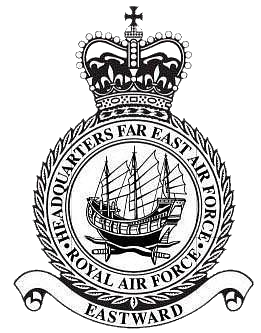

Extract from the website of S/Ldr Jack Riley (d)
(past Honorary Chairman of UKMAMS OBA)
Continued...
(past Honorary Chairman of UKMAMS OBA)
Continued...
Labuan - In the late 40's Labuan boasted a long coral strip which used to happily handle Constellations en route to Australia. The RAF had a Signals detachment there and once again I arrived to open an Air Movements Section. Whilst I was there we had one transitting diva... could it have been a young Joan Sutherland?
The tone of the place was set by the local Police Chief, a Captain, who ran the poker school at the 'Club ' and his wife, a very beautiful Polish doctor. The RAF flew in a weekly film, screened in the open air, and one has lasting memories of the resident, Mr Hill, the King's representative there, arriving in his Rolls Royce, cane chair lashed to the roof.
A Cook's Tour of the island always took in the 'power station ' which was, in fact, a generator in half a corrugated iron shed. In the other half was another lasting memory... a very elderly, say 1920's, Rolls Tourer, nearly complete with bamboo-strutted collapsible canvas hood. Gear changing involved a brake-type lever working through a solid brass gate fixed to the floorboards. The nattiest device was a system of rods connecting a lever on the running board to the enormous brass headlights... dip-switch! And when the Station Engineer opened the bonnet of his pride and joy there lay a mile of glistening engine. He told me that they had taken it out on the runway and that the hood had blown off at 90mph so they hadn't dared 'let it out .'
Such was Labuan.
The tone of the place was set by the local Police Chief, a Captain, who ran the poker school at the 'Club ' and his wife, a very beautiful Polish doctor. The RAF flew in a weekly film, screened in the open air, and one has lasting memories of the resident, Mr Hill, the King's representative there, arriving in his Rolls Royce, cane chair lashed to the roof.
A Cook's Tour of the island always took in the 'power station ' which was, in fact, a generator in half a corrugated iron shed. In the other half was another lasting memory... a very elderly, say 1920's, Rolls Tourer, nearly complete with bamboo-strutted collapsible canvas hood. Gear changing involved a brake-type lever working through a solid brass gate fixed to the floorboards. The nattiest device was a system of rods connecting a lever on the running board to the enormous brass headlights... dip-switch! And when the Station Engineer opened the bonnet of his pride and joy there lay a mile of glistening engine. He told me that they had taken it out on the runway and that the hood had blown off at 90mph so they hadn't dared 'let it out .'
Such was Labuan.

From: Tony Mullen, Toowoomba, QLD
Subject: Borneo
Subject: Borneo
A short time later saw me and the late great Bob Turner at a forward jungle airstrip called Long Semado managing a Gurkha Battalion changeover with Wessex helicopters and STOL Pioneers. We lived with the Gurkhas and ate their rations. Curried veg for breakfast, Gurkha rum for lunch and curried chicken for dinner. We soon got sick of it and I requested some compo rations on the next air drop. These duly arrived and I handed them to the Gurkha cook. You guessed it he curried them! One night we were awoken with mortar and small arms fire. Bob and I were told to stay in the slit trench and we did not need telling twice! It was apparently an Indonesian patrol checking out defences.
My last involvement was with helicopter underslung loads. MAMS was tasked with moving mobile radar cabins called UPS1 to forward locations along the border with Indonesia. These were very heavy and unwieldy and under the direction of Derek Hartland we designed a bolt on tail and nose fin which stabilised the load. The work was very interesting and I think fairly unique.
It was a memorable time in my life, I enjoyed most of it but I could have done without the rats which infested every jungle outpost.
Tony Mullen
My last involvement was with helicopter underslung loads. MAMS was tasked with moving mobile radar cabins called UPS1 to forward locations along the border with Indonesia. These were very heavy and unwieldy and under the direction of Derek Hartland we designed a bolt on tail and nose fin which stabilised the load. The work was very interesting and I think fairly unique.
It was a memorable time in my life, I enjoyed most of it but I could have done without the rats which infested every jungle outpost.
Tony Mullen
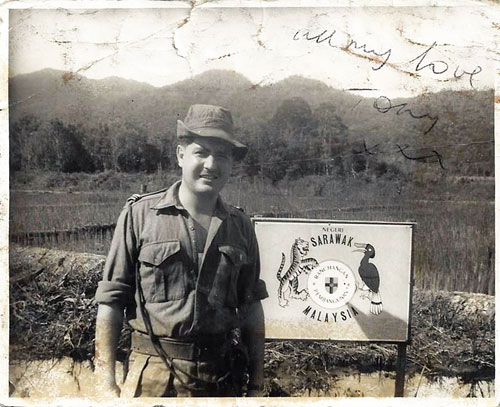
We're all feeling the love Tony!
During my tour on FEAF MAMS in 64/65 I spent a lot of time in Borneo. The first task was an ongoing 2 week on 2 week off rotation as MOVO at Brunei Airport. Most of the work was with helicopters and STOL aircraft such as Twin and Single Pioneers. Most of the pax were Gurkhas or SAS. Our accommodation and office was a rat infested hut! At night you had to tuck your mossie net under you to keep the rats away. They ran up the outside of the net throughout the night. I needed a few beers to get to sleep. Not an enjoyable experience!
My next involvement was another rotation as RAF MOVO at HQ 99 Ghurkha Brigade in Kuching town. I was part of the RAF FATOC team tasking transport aircraft in support of Army ops. The movements task was limited to a sort of air booking centre. My staff was an SAC Clerk Sec! I had very little to do and filled my days up with trips to the RAF base to have a chat with the SAMO, Len Gibson, and swimming at the Kuching Club. The RAF FATOC staff were accommodated in the beautiful Aurora Hotel in the centre of Kuching overlooking the Padang. I can still remember the Chateau Briand steak which was always on the dinner menu.
This interlude was followed by a detachment at Sibu with Sgt Geoff Gilson and Liam Devlin. We were overseeing a battalion changeover handling Valletta and Argosy aircraft. In between surges of activity we spent a lot of time at the brand new Olympic sized swimming pool outside the town and visiting Iban long houses along the Rejang river travelling by speed boats. Accomodation was excellent in the best hotel in town.
My next involvement was another rotation as RAF MOVO at HQ 99 Ghurkha Brigade in Kuching town. I was part of the RAF FATOC team tasking transport aircraft in support of Army ops. The movements task was limited to a sort of air booking centre. My staff was an SAC Clerk Sec! I had very little to do and filled my days up with trips to the RAF base to have a chat with the SAMO, Len Gibson, and swimming at the Kuching Club. The RAF FATOC staff were accommodated in the beautiful Aurora Hotel in the centre of Kuching overlooking the Padang. I can still remember the Chateau Briand steak which was always on the dinner menu.
This interlude was followed by a detachment at Sibu with Sgt Geoff Gilson and Liam Devlin. We were overseeing a battalion changeover handling Valletta and Argosy aircraft. In between surges of activity we spent a lot of time at the brand new Olympic sized swimming pool outside the town and visiting Iban long houses along the Rejang river travelling by speed boats. Accomodation was excellent in the best hotel in town.

From: David Stevens, Bangor
Subject: The RAF in Borneo
Hi Tony,
On 25 March 1964 'E' Team flew out of RAF Lyneham 10.06hrs (ATD). Our final destination was Kuching, Borneo. The team comprised Plt Off Stevens, Sgt Mooney, Sgt Snell, Cpl Redman, SAC Gibson and SAC Yeoman. We were the first into Kuching on 2 April and last out on 14 May as movements reinforcement for 99 Gurkha Brigade HQ.
The team was split up between the brigade HQ, Kuching City (Stevens and Redman), RAF Kuching Movements (Mooney and Yeoman), a remote outpost in Sabah (Gibson) and in Labuan (Snell). I will stand corrected if I have got the disposition of the team wrong, it was a long time ago!
Some memories:
1. Gibson in Labuan, and on patrol one night fired off a round from his Lee-Enfield .303 rifle when he heard a rustling in the jungle outside the airfield perimeter. He was highly indignant when the Orderly Officer made him write out a report of the incident!
2. I did a 'side' trip to Sibu on a Valetta, piloted by one Flt Lt Oldam. It was a resupply run to a small army detachment.
Subject: The RAF in Borneo
Hi Tony,
On 25 March 1964 'E' Team flew out of RAF Lyneham 10.06hrs (ATD). Our final destination was Kuching, Borneo. The team comprised Plt Off Stevens, Sgt Mooney, Sgt Snell, Cpl Redman, SAC Gibson and SAC Yeoman. We were the first into Kuching on 2 April and last out on 14 May as movements reinforcement for 99 Gurkha Brigade HQ.
The team was split up between the brigade HQ, Kuching City (Stevens and Redman), RAF Kuching Movements (Mooney and Yeoman), a remote outpost in Sabah (Gibson) and in Labuan (Snell). I will stand corrected if I have got the disposition of the team wrong, it was a long time ago!
Some memories:
1. Gibson in Labuan, and on patrol one night fired off a round from his Lee-Enfield .303 rifle when he heard a rustling in the jungle outside the airfield perimeter. He was highly indignant when the Orderly Officer made him write out a report of the incident!
2. I did a 'side' trip to Sibu on a Valetta, piloted by one Flt Lt Oldam. It was a resupply run to a small army detachment.
3. One night a Gurkha patrol was ambushed and decimated. I was present when the bodies were helicoptered into landing pad at 99 HQ. There were five bodies when there should have been six. A search was launched immediately to locate the missing Gurkha assumed dead. The patrol routes were well mapped but it still took three days to find the soldier who was hidden up a tree. When asked why, after three days he was still at his post his reply was succinct and simple, "My patrol commander ordered me to take up this position in the tree and to watch the patrol's rear." He would stay there until ordered otherwise! He knew nothing of the fate that had befallen his patrol. He had seen other patrols pass by but was totally unaware that they were searching for him. No wonder the British army hold these soldiers in such high regard. As luck would have it, I had both the pleasure and the honour to have served three years (1979-82) in Nepal as The Gurkha Charter Co-ordinating Officer - RAF GCCO.
4. I went on R and R to Butterworth travelling in an RNAZ Bristol Freighter. I stayed at The Runnymede Hotel on Penang Island. Who in their right mind would go in a Bristol Freighter? - a desperate MAMS officer for a start!
From Borneo 'E' Team was sent to Thailand to take part in Exercise 'Air Boon Choo'. We were sent to RAAF Base Ubon on the Thai-Cambodia border.
Regards,
David
4. I went on R and R to Butterworth travelling in an RNAZ Bristol Freighter. I stayed at The Runnymede Hotel on Penang Island. Who in their right mind would go in a Bristol Freighter? - a desperate MAMS officer for a start!
From Borneo 'E' Team was sent to Thailand to take part in Exercise 'Air Boon Choo'. We were sent to RAAF Base Ubon on the Thai-Cambodia border.
Regards,
David

From: Charles Gibson, Monifieth, Angus
Subject: The RAF in Borneo
Coming from my first posting as an Ex Boy Entrant (4 FTS RAF Valley) and this being my first overseas posting (RAF Kuching) it was all very exciting.
When I first was told I was going to Kuching I had no idea where it was so went to see the Education Officer who had previously been at Credenhill, Hereford, and he did a wind-up on me in that he reckoned it was in Red China (Ku-ching); eventually he told me the truth. When I arrived at Kuching in my book it looked like a Prisoner of War Camp with everyone wandering about in flip flops and shorts. I soon got into the way of things.
Chas 43rd
Subject: The RAF in Borneo
Coming from my first posting as an Ex Boy Entrant (4 FTS RAF Valley) and this being my first overseas posting (RAF Kuching) it was all very exciting.
When I first was told I was going to Kuching I had no idea where it was so went to see the Education Officer who had previously been at Credenhill, Hereford, and he did a wind-up on me in that he reckoned it was in Red China (Ku-ching); eventually he told me the truth. When I arrived at Kuching in my book it looked like a Prisoner of War Camp with everyone wandering about in flip flops and shorts. I soon got into the way of things.
Chas 43rd

From: Barry Tappenden, Shortstown, Beds
Subject: The RAF in Borneo
Subject: The RAF in Borneo
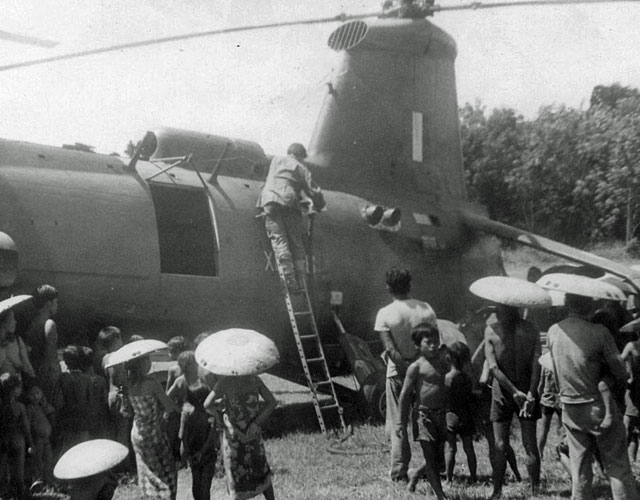
Hi Tony,
Just a few photographs showing FEAF MAMS in action 1964-67
Regards
Barry Tappenden
Just a few photographs showing FEAF MAMS in action 1964-67
Regards
Barry Tappenden

From: David Powell, Princes Risborough
Subject: The RAF in Borneo
Hi Tony
Borneo BusTails and Other Stories.
Although never actually posted to Borneo, I did manage a trip to Labuan for a very exciting ride on a Beverley stores para drop from Labuan. However, here are a few Borneo related stories from during my stint at RAF Changi, August 1964 to February 1967.
One morning, the very attractive Changi Air Movements pax officer Fg Off Mo (Maureen) Bussey was in her usual strap hanging standing position at the front of a bus load of a platoon of operational troops she was escorting out to their waiting Argosy for their flight across to Kuching and then on to several weeks at one of the forward jungle locations. As the bus journey proceeded across to the 215 squadron dispersal, the combination of driver enthusiasm, a swaying bus, and a rather tight regularly washed KD uniform dress resulted in the top buttons of her uniform surrendering to the pressures of the day. When they came to debus, Mo complemented the chalk’s Sgt for his platoon’s very attentive manner. In response, the Sgt quietly suggested that she may wish to check and adjust her upper uniform, with the rider – ‘just as well for you it happened for the lads on their way to Borneo, Mam, and not their way back!’
Then there was the time an RAF airman from an RAF station in deepest East Anglia turned up at Changi booked on a flight to Kuching and with a railway warrant for the train to Labuan.
Subject: The RAF in Borneo
Hi Tony
Borneo BusTails and Other Stories.
Although never actually posted to Borneo, I did manage a trip to Labuan for a very exciting ride on a Beverley stores para drop from Labuan. However, here are a few Borneo related stories from during my stint at RAF Changi, August 1964 to February 1967.
One morning, the very attractive Changi Air Movements pax officer Fg Off Mo (Maureen) Bussey was in her usual strap hanging standing position at the front of a bus load of a platoon of operational troops she was escorting out to their waiting Argosy for their flight across to Kuching and then on to several weeks at one of the forward jungle locations. As the bus journey proceeded across to the 215 squadron dispersal, the combination of driver enthusiasm, a swaying bus, and a rather tight regularly washed KD uniform dress resulted in the top buttons of her uniform surrendering to the pressures of the day. When they came to debus, Mo complemented the chalk’s Sgt for his platoon’s very attentive manner. In response, the Sgt quietly suggested that she may wish to check and adjust her upper uniform, with the rider – ‘just as well for you it happened for the lads on their way to Borneo, Mam, and not their way back!’
Then there was the time an RAF airman from an RAF station in deepest East Anglia turned up at Changi booked on a flight to Kuching and with a railway warrant for the train to Labuan.
Then there was the ex WWII fighter pilot and now a very senior air marshal at Headquarter’s Far East Air Force who would borrow occasionally one of the RAF Changi Target Towing Flight Meteors to pop across to Labuan to ‘check on the lads’. During the planned flight time, Air Traffic would declare an ‘any other aircraft go away’ bubble between Changi and Labuan. After landing and taxying the Meteor, the instructions to the RAF Labuan ground servicing flight were always quite explicit – ‘Don’t touch anything, just one switch to remember and it will all start up again!’
Finally, a left over story from the Changi memories (thank you all contributors) about the practice AOC’s parade when on the command; ‘Open Order, MARCH,’ as a man the rear rank fell into a monsoon drain!
Stay safe
David Powell
F Team 1967-69
Finally, a left over story from the Changi memories (thank you all contributors) about the practice AOC’s parade when on the command; ‘Open Order, MARCH,’ as a man the rear rank fell into a monsoon drain!
Stay safe
David Powell
F Team 1967-69

Jungle Life Line

From: Bernie Hurdsfield, Corby, Northants
Subject: RAF Labuan
Hi Tony,
Having completed the Air Movs course at Abingdon in May 1966, I was posted to Labuan in July 1966 for a one year tour. I didn't realise how lucky I was as most of our Boy Entrants intake (50th Supplier) were posted to Khormaksar and Steamer Point in Aden.
When I arrived there the accomodation, although primitive, was on Membedai site about 50 yards from a white sand beach and tropical blue South China Sea.
The job itself was fantastic with such a variety of aircraft. We handled Pembrokes, Varsity, Twin Pioneers, Argosy, Hastings, Beverley and the odd Britannia. Most of these were involved in resupply to the army at jungle airstrips or para dropping. We also handled RNZAF Bristol Freighters and RMAF Caribous. Helicopter wise there were Westland Whirlwinds and Wessex plus RMAF Allouettes.
Handling aids were sparse and primitive consisting of one 6,000 lbs fork lift truck, one 3 ton Bedford RL and one flat bed trailer. Most of the cargo and all the baggage was hand-bombed.
Subject: RAF Labuan
Hi Tony,
Having completed the Air Movs course at Abingdon in May 1966, I was posted to Labuan in July 1966 for a one year tour. I didn't realise how lucky I was as most of our Boy Entrants intake (50th Supplier) were posted to Khormaksar and Steamer Point in Aden.
When I arrived there the accomodation, although primitive, was on Membedai site about 50 yards from a white sand beach and tropical blue South China Sea.
The job itself was fantastic with such a variety of aircraft. We handled Pembrokes, Varsity, Twin Pioneers, Argosy, Hastings, Beverley and the odd Britannia. Most of these were involved in resupply to the army at jungle airstrips or para dropping. We also handled RNZAF Bristol Freighters and RMAF Caribous. Helicopter wise there were Westland Whirlwinds and Wessex plus RMAF Allouettes.
Handling aids were sparse and primitive consisting of one 6,000 lbs fork lift truck, one 3 ton Bedford RL and one flat bed trailer. Most of the cargo and all the baggage was hand-bombed.
For a very green 19 year old it was an experience not to be missed. I feel sorry for today's RAF personnel in that their world has shrunk a lot and current health and safety regulations have prevented utilising the practical skills we learned, such as rolling a full 45 gallon drum on it's rim to get it on a pallet.
As a final thought, looking on Google Earth, Labuan Island is now a tourist attraction - and I spent a year getting paid to be there!
Best regards
Bernie
As a final thought, looking on Google Earth, Labuan Island is now a tourist attraction - and I spent a year getting paid to be there!
Best regards
Bernie
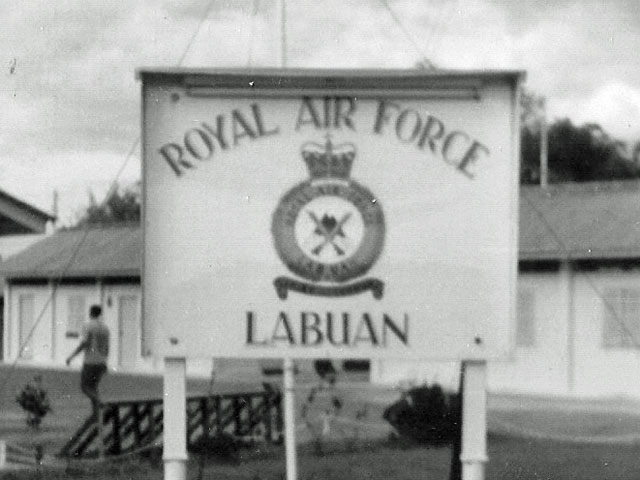
Main Gate Sign at RAF Labuan

From: Alan Potts, 11100 Narbonne
Subject: The RAF in Borneo
Hi Tony,
RAF LABUAN 1964-65
First overseas posting, in fact the first time that I had been outside the UK. After 4 days in Changi transit I had the pleasure of a para seat in an Argosy of 215 Sqn to travel to Labuan. I thought Changi was hot but when we got off in Labuan the heat and humidity really hit me, but it was something that I quickly got used to and enjoyed.
My posting though was to supply and so the movements Sgt, Brian Gent, shipped me off to the supply billet, a typically open ended/sided tin covered hut with 15 beds either side, one bedside locker and one wardrobe (something I came to appreciate later in life when living in a portacabin in Port Stanley!).
I was given the job of Dhobi Wallah! What had I come to? Actually, it was a good number, I had a 3 ton truck, a driver and a local labourer and we just picked up from the huts and delivered to the on-site laundry; a couple of big open swimming pool-like tubs where the local girls and women smacked our kit and our sheets about before hanging everything out to dry. Quite an easy life and the girls were easy on the eye also!
After 6 months the Boss, Flt Lt Tony Attrill, said I was wasting my time in the job and he brought me back to EPAF to run F1640 ledger entries, how boring.
However, on the plus side, the sport was wonderful. There were two soccer teams playing in a league against the Army and the Gurkhas, plus local teams and it was the same for my basketball team. Also, after work, we had weekly inter-section soccer.
Subject: The RAF in Borneo
Hi Tony,
RAF LABUAN 1964-65
First overseas posting, in fact the first time that I had been outside the UK. After 4 days in Changi transit I had the pleasure of a para seat in an Argosy of 215 Sqn to travel to Labuan. I thought Changi was hot but when we got off in Labuan the heat and humidity really hit me, but it was something that I quickly got used to and enjoyed.
My posting though was to supply and so the movements Sgt, Brian Gent, shipped me off to the supply billet, a typically open ended/sided tin covered hut with 15 beds either side, one bedside locker and one wardrobe (something I came to appreciate later in life when living in a portacabin in Port Stanley!).
I was given the job of Dhobi Wallah! What had I come to? Actually, it was a good number, I had a 3 ton truck, a driver and a local labourer and we just picked up from the huts and delivered to the on-site laundry; a couple of big open swimming pool-like tubs where the local girls and women smacked our kit and our sheets about before hanging everything out to dry. Quite an easy life and the girls were easy on the eye also!
After 6 months the Boss, Flt Lt Tony Attrill, said I was wasting my time in the job and he brought me back to EPAF to run F1640 ledger entries, how boring.
However, on the plus side, the sport was wonderful. There were two soccer teams playing in a league against the Army and the Gurkhas, plus local teams and it was the same for my basketball team. Also, after work, we had weekly inter-section soccer.
The beach was just behind our hut so swimming was another way of passing time before heading off for the evening entertainment; either the NAAFI tent for a few beers or a trip into the local town of Port Victoria to assess the local ladies who were few and far between (and of course our arrival brief stated that we should not get so involved!).
I do remember one chap who had a very successful tour with one young lady, it was the brother of Tony Cornett, Brian, who dated Rose for his whole tour. Labuan was also the first of my many encounters with the late Derek Pilkington who was running Tech Stores, great chap and great story teller. So all that and more, and as long as the daily Hastybird arrived from Changi with the mail everyone was happy. I visited friends there several time whilst I was in Hong Kong in the 90’s and not too much had changed. Happy days!
Alan
I do remember one chap who had a very successful tour with one young lady, it was the brother of Tony Cornett, Brian, who dated Rose for his whole tour. Labuan was also the first of my many encounters with the late Derek Pilkington who was running Tech Stores, great chap and great story teller. So all that and more, and as long as the daily Hastybird arrived from Changi with the mail everyone was happy. I visited friends there several time whilst I was in Hong Kong in the 90’s and not too much had changed. Happy days!
Alan

From: Robert Taylor, Doncaster, South Yorks
Subject: The RAF in Borneo
My posting to Kuching began from RAF Wyton. I had a rush of blood to the brain box and volunteered (yes I know, never volunteer for anything) for a 12 months unaccompanied tour. Must have had girlfriend troubles but thinking back, at that time I was going out with a certain Susan Taylor from Ramsey who was a right bit of stuff. Memories of her are flooding back, but that’s another story, anyway lets get back on track.
I left Wyton with a railway warrant, passport and suitcase one very cold day in November 1965. I was a bit under the weather from the night before after a great send off party from the lads. I made my way down to Knightsbridge in London for the booking-in process for my flight to Singapore. Sitting in the lounge drinking loads of coffee (no beer on sale), still trying to get rid of my hangover. I started a conversation with Jonah Johnson who was sitting next to me. It turned out he was going to Kuching also. In the end there were nine of us all going to the same place - all Suppliers - the ‘Mavericks’ were born - more later.
Eventually, we all boarded a coach for Heathrow. Travelling down the A4 (no motorway then), the coach broke down. This was a bad omen. This was the start of a journey that lasted a week to get to Singapore. At Heathrow, after booking in, we all headed straight for the bar. In my case “the hair of the dog” started to work.
I can’t remember the name of the civil airline, but the aircraft was a Britannia. After a delay of some hours, we boarded and started the take-off run, but the pilot aborted. After coming to a stop, we were surrounded by fire engines. Obviously something was very wrong with the aircraft. We all returned to the bar. Many hours later, we got away, heading for our first stop, Kuwait City. We landed okay, but there was some trouble with one of the engines. It turned out this was the same problem that they had back at Heathrow. Whilst on a little walk around the airport we watched other aircraft movements. We saw one landing with another one coming in right up his rear. The one on the ground seemed to go straight up and the other passed under him to land; they missed each other by feet! Glad we were on the ground then.
Subject: The RAF in Borneo
My posting to Kuching began from RAF Wyton. I had a rush of blood to the brain box and volunteered (yes I know, never volunteer for anything) for a 12 months unaccompanied tour. Must have had girlfriend troubles but thinking back, at that time I was going out with a certain Susan Taylor from Ramsey who was a right bit of stuff. Memories of her are flooding back, but that’s another story, anyway lets get back on track.
I left Wyton with a railway warrant, passport and suitcase one very cold day in November 1965. I was a bit under the weather from the night before after a great send off party from the lads. I made my way down to Knightsbridge in London for the booking-in process for my flight to Singapore. Sitting in the lounge drinking loads of coffee (no beer on sale), still trying to get rid of my hangover. I started a conversation with Jonah Johnson who was sitting next to me. It turned out he was going to Kuching also. In the end there were nine of us all going to the same place - all Suppliers - the ‘Mavericks’ were born - more later.
Eventually, we all boarded a coach for Heathrow. Travelling down the A4 (no motorway then), the coach broke down. This was a bad omen. This was the start of a journey that lasted a week to get to Singapore. At Heathrow, after booking in, we all headed straight for the bar. In my case “the hair of the dog” started to work.
I can’t remember the name of the civil airline, but the aircraft was a Britannia. After a delay of some hours, we boarded and started the take-off run, but the pilot aborted. After coming to a stop, we were surrounded by fire engines. Obviously something was very wrong with the aircraft. We all returned to the bar. Many hours later, we got away, heading for our first stop, Kuwait City. We landed okay, but there was some trouble with one of the engines. It turned out this was the same problem that they had back at Heathrow. Whilst on a little walk around the airport we watched other aircraft movements. We saw one landing with another one coming in right up his rear. The one on the ground seemed to go straight up and the other passed under him to land; they missed each other by feet! Glad we were on the ground then.
With memories of that near-miss still fresh in our minds, and after over 24 hours delay in Kuwait, we took off for Colombo, Ceylon (now Sri Lanka). Again on arrival they had trouble with that same engine. This time they decided on an engine change. The families and officers had hotels to go to. We, the lower ranks, had to go to the local YMCA. Words cannot express what this place was like. It was disgusting. We spent all our time walking around Colombo and drinking. After a few hours we began to notice that the clothes we were wearing were rotting. What a welcome to the tropics. The local shops made a small fortune out of us all.
A total of seven days after leaving the UK we arrived in Singapore and transferred to Seletar (or was it Changi?) to await our flight to Kuching. The delights of Singapore awaited us.
What a place Singapore was, especially Bugis Street! You could buy anything you required, and I mean anything. For those of you who didn’t have the pleasure of visiting, you really missed out. Those of you who went there know what I mean. I’ll say no more until later.
Two days later, via a Bristol Freighter that I think belonged to the RAAF, we landed at RAF Kuching in what was then Sarawak (now Malaysia). All I can remember about this trip was the noise, the vibrations and having to sit on the cargo.
A total of seven days after leaving the UK we arrived in Singapore and transferred to Seletar (or was it Changi?) to await our flight to Kuching. The delights of Singapore awaited us.
What a place Singapore was, especially Bugis Street! You could buy anything you required, and I mean anything. For those of you who didn’t have the pleasure of visiting, you really missed out. Those of you who went there know what I mean. I’ll say no more until later.
Two days later, via a Bristol Freighter that I think belonged to the RAAF, we landed at RAF Kuching in what was then Sarawak (now Malaysia). All I can remember about this trip was the noise, the vibrations and having to sit on the cargo.
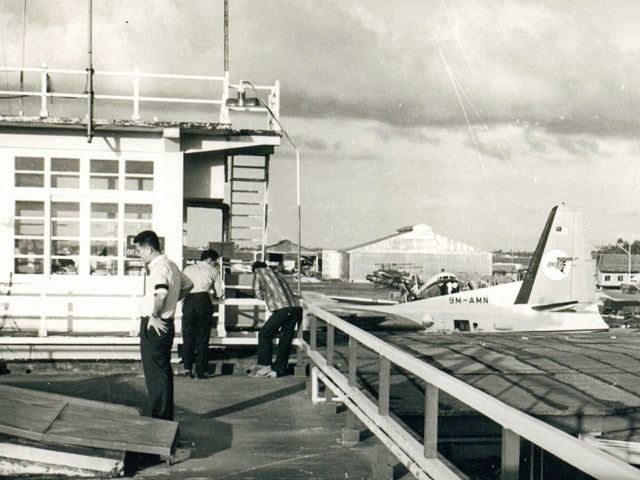
This photo shows part of the civilian airport and RAF base. The guy standing on the roof wearing an armband is not Air Movements - in fact he was Malay and is wearing a black armband for obvious reasons.
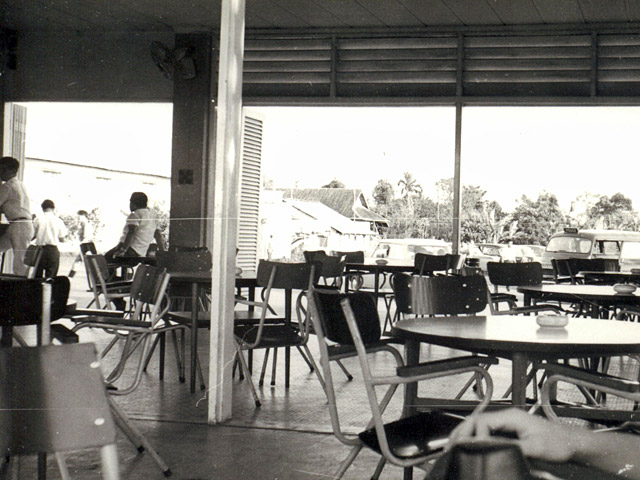
Air Movements Passenger Terminal and Lounge. Notice the bar in the middle left. This was used by everybody, especially those off duty
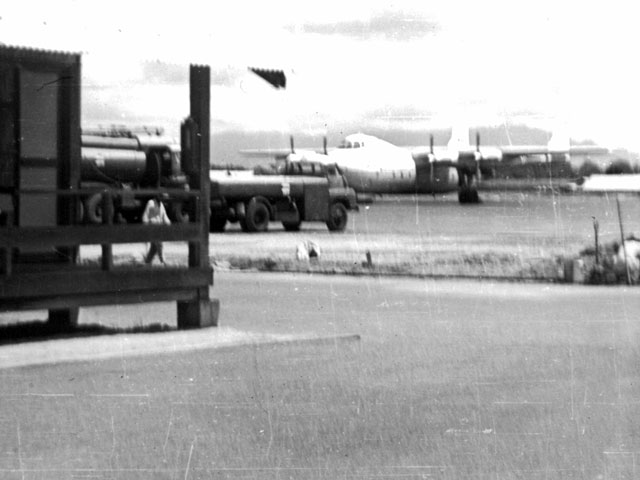
Here’s a view from the Supply Control and Accounting Flight (SCAF). Part of the camp HQ is on the left and an Argosy is on the pan.
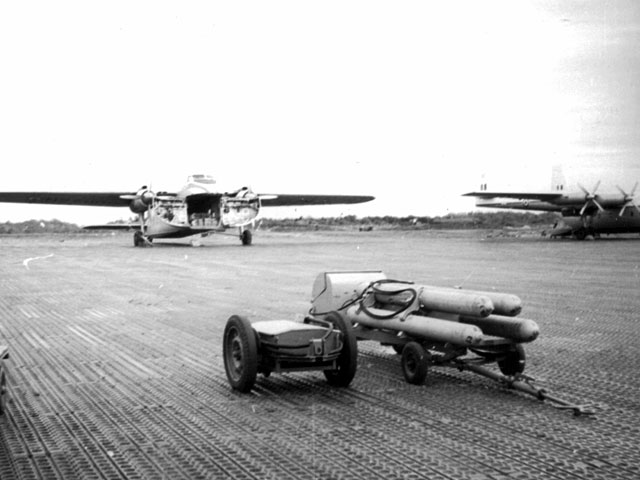
Looking across from Air Cargo, there’s a Bristol Freighter next to an Argosy
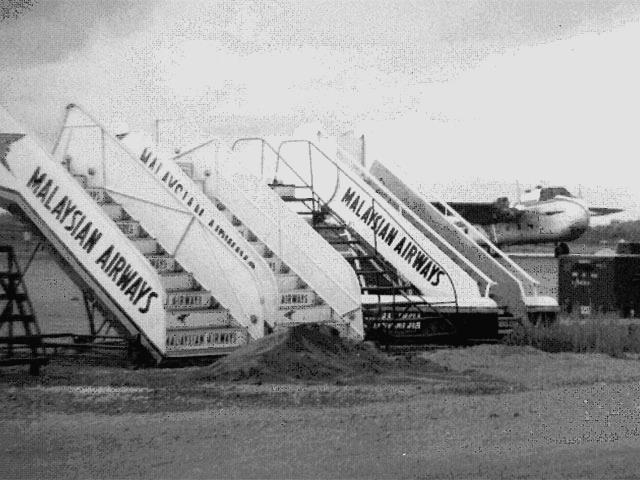
Another shot taken from Air Cargo with the aircraft steps and a Bristol Freighter
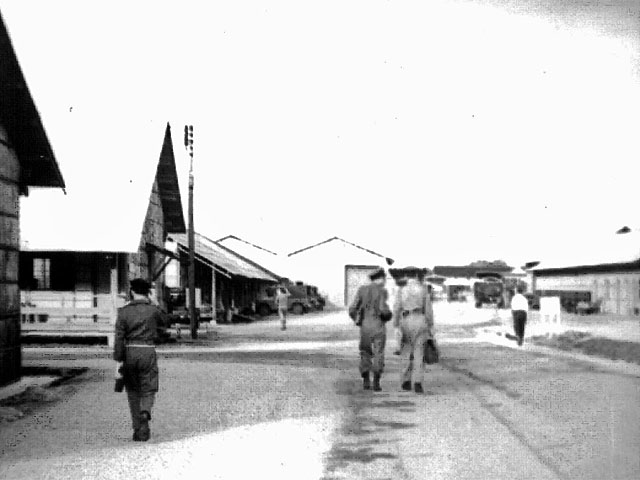
Main Street. On the left SCAF, then HQ, further down on the left is the Comcen, Air Operations and Air Movements etc. Also down on the left, Station Sick Quarters, which always had a large box outside the entrance full of condoms. V.D was like the common cold out there. I remember one guy… no, I’d better not, he could still be around... Slightly to the right and further down is the Main Guardhouse
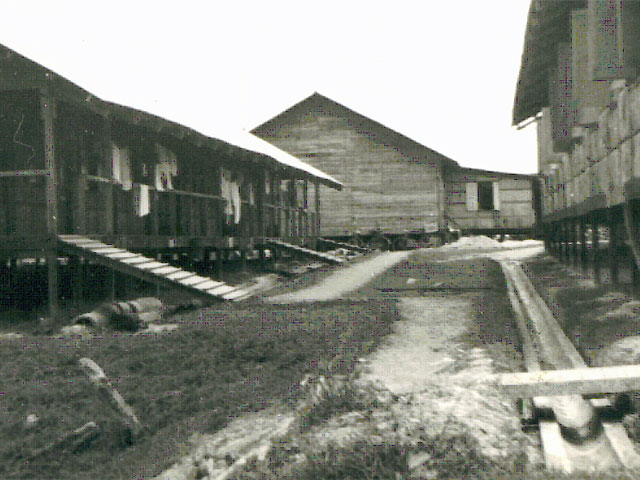
No this not a photo of a POW camp! This was my home for twelve months. The hut on the left was where I lived and shared a room with five other guys. Notice the laundry hanging out to dry and the flood ditches. The building middle top was the NAAFI, not too far to stagger back to our pits!
Before we go any further, a little explanation of my working life in SCAF. This was my only posting where I had to shuffle paper around in the Supply Squadron. On arrival, my first job was inventory clerk. This wasn’t too bad really, if anything went missing, it was “issued to the forward area” then written off - it was assumed that anything going up there never came back.
I then became a stock controller (F1640’s come to mind). I think I am correct in saying that the 46th Boy Entrant brats were the last to be trained in the old supply system. After the 46th Entry, computers came in, so walking into SCAF out there was like entering a museum, everything was done by hand.
I then became a stock controller (F1640’s come to mind). I think I am correct in saying that the 46th Boy Entrant brats were the last to be trained in the old supply system. After the 46th Entry, computers came in, so walking into SCAF out there was like entering a museum, everything was done by hand.
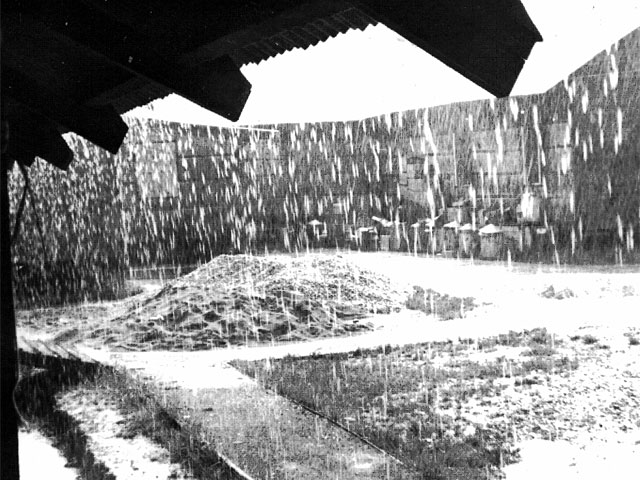
When it rained it came down in droves - which explains the reason for the flood ditches!. This shot was taken from the NAAFI.
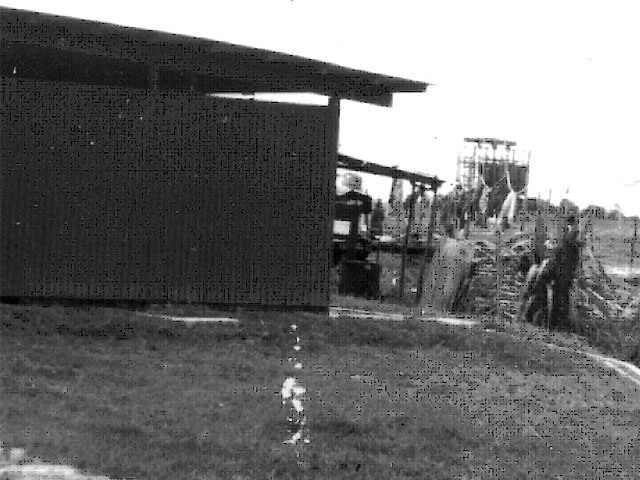
This is a shot of "The Bogs". It looks bad but I’ve been in worse
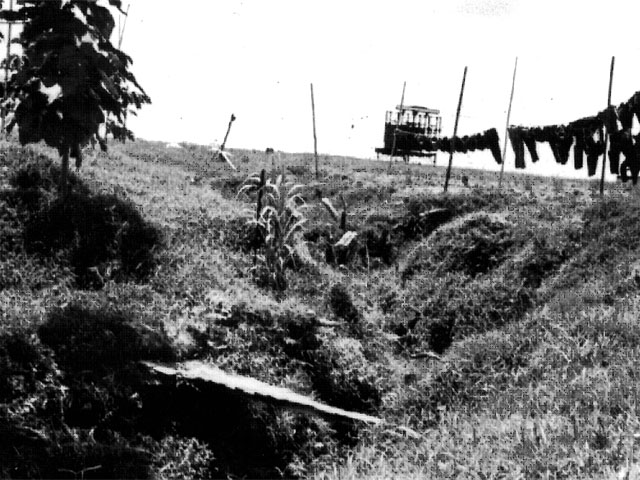
Taken from behind the bogs. We used to have all sorts of nasties coming out of there, many different types of snakes and loads of various creepy crawlies. After dark the bogs were not used a lot, I wonder why?
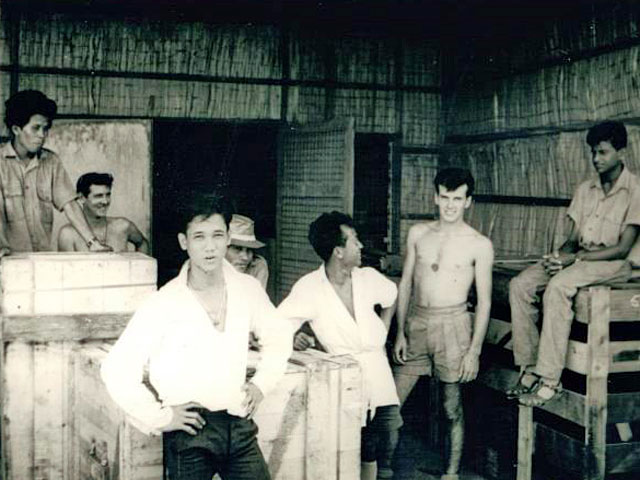
R & D Section
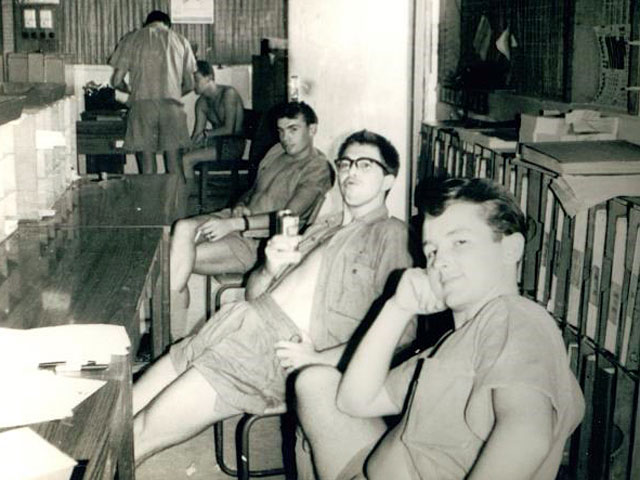
SCAF, F1640’s Stock Control Section. Third from right (with legs crossed) is Jonah Johnson
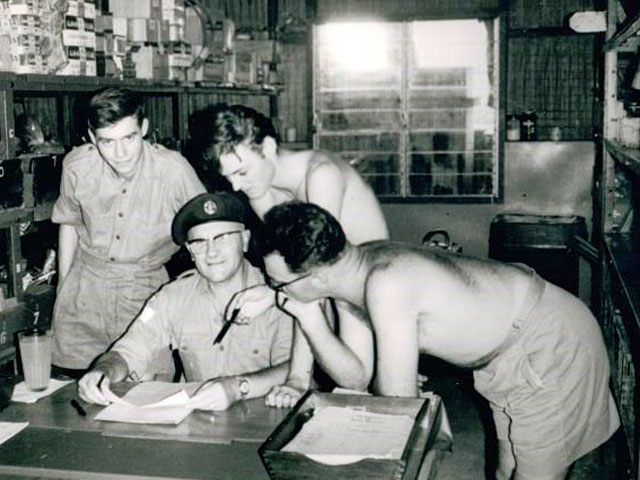
Tech Stores. On the left is Paul Hignett
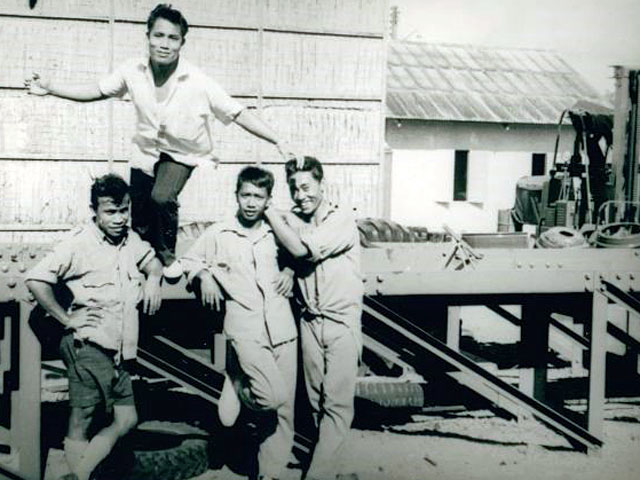
Local Malay Labourers
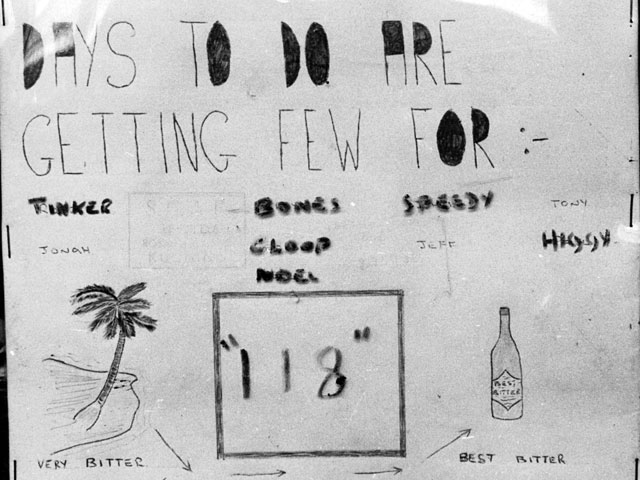
On the sign is Tinker (that's me!), Jonah, Bones, Cloop, Noel, Speedy, Jeff, Tony and Higgy. We are the originals that met up in London and with others formed the “Mavericks”. We were mainly a darts team but took on all-comers in different sports, especially drinking contests.
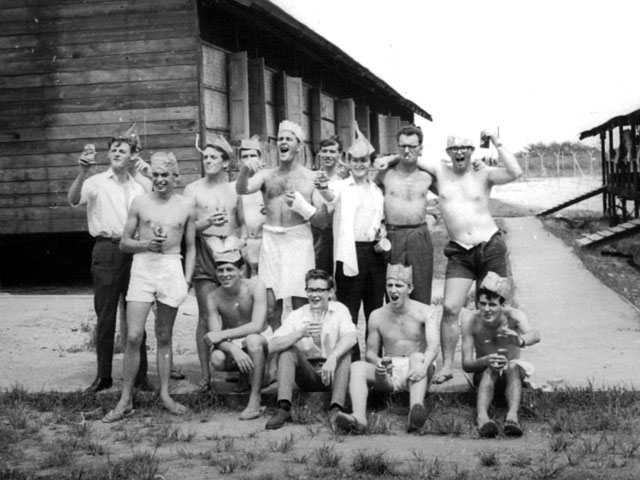
Supply and Air Movements Squadron, Boxing Day 1965. Names that I can recall are few, especially 52 years after the event, but in the front row, left to right are: Jonah Johnson, Tinker (that's me!) and Chas Gibson
A Westland Belvedere Mk 1
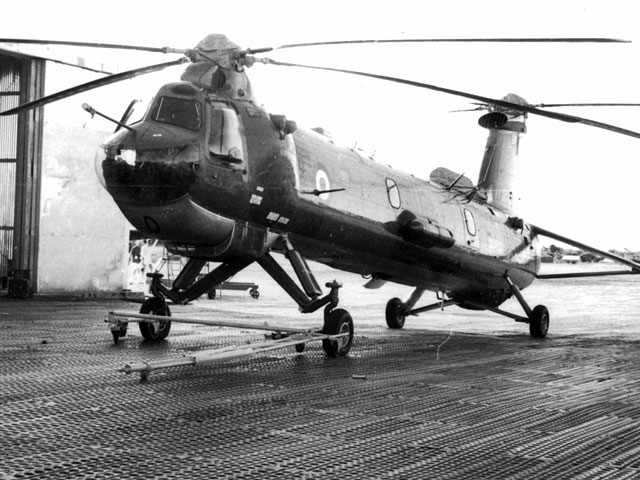
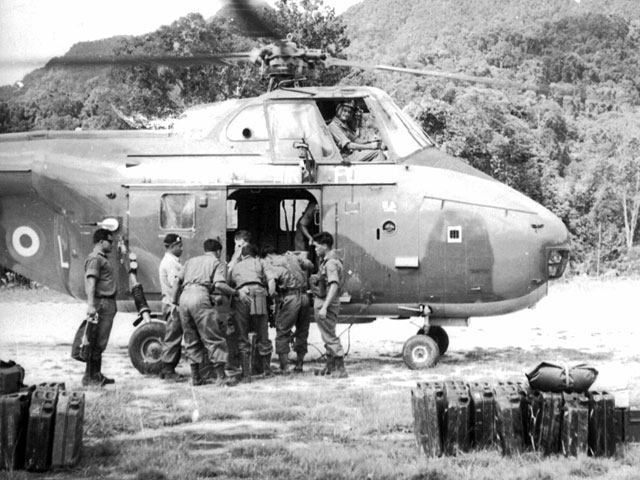
A Westland Whirlwind is tasked for a fuel drop to a forward supply base at Simangang. We used to volunteer for these trips as it allowed us to see a lot more of the country.
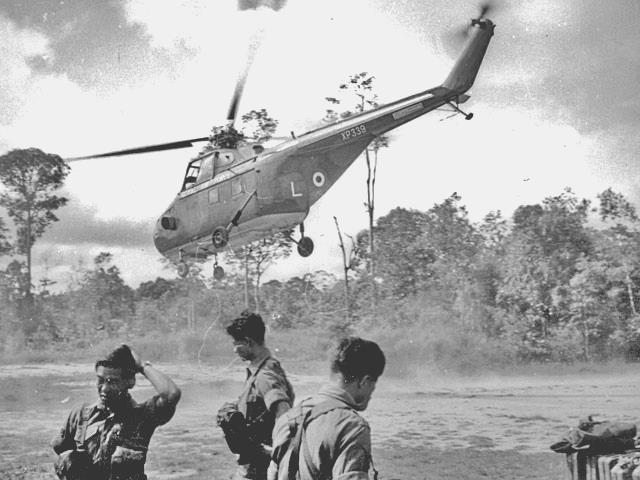
Another fuel drop, but this time at Sibu.
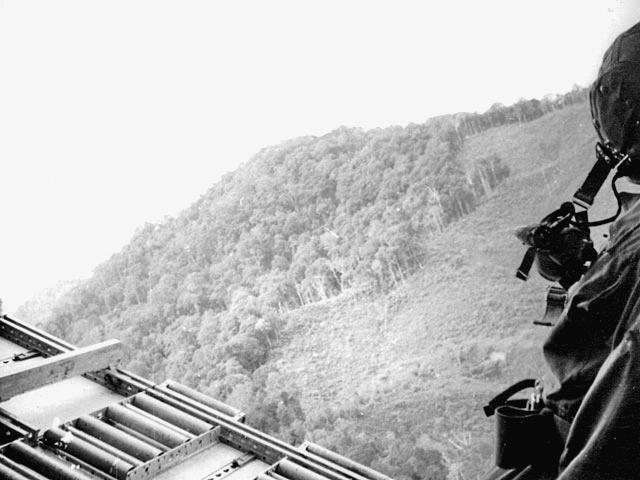
I managed to hitch a ride on an Argosy doing supply drops over a forward area
Not only did we volunteer for the helicopter drops we were "volunteered" at random to escort Bedford 3-Tonners up country. These were fully loaded with 45-gallon drums of high-octane fuel. The only place to sit was on top of the drums, but this time we had to have our Lee-Enfield .303’s with the total ration of five rounds each with us. Who knows what would have happened if we met the enemy, who ever they were. Not to forget that the confrontation was still going on then even although it was getting towards the end I could never understand the logic in issuing us with only five rounds each. Perhaps the powers that be thought the less ammo we had, the less damage we could do? This applied to the many real call- outs we had on the base as well.
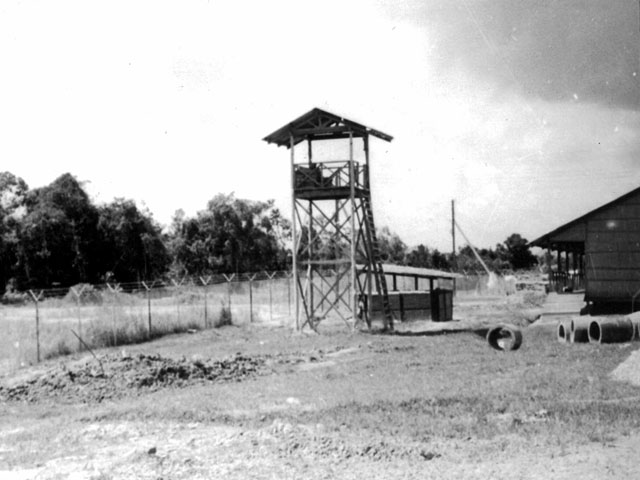
No, honestly it’s not a POW camp! This is part of the base perimeter, which on call-out we had to protect. The system was, get to the armoury, collect your weapon and your five rounds, and then run to your allocated place. Mine was up on that look-out tower. One guy started a right panic when he let off a couple of rounds. The subsequent search revealed a dead monkey. He got into trouble - but not for his shooting accuracy!
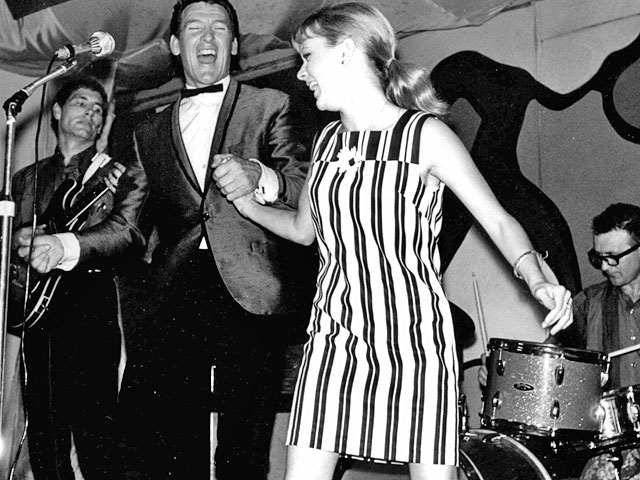
This was during a visit from some Aussies who were part of ENSA (if that’s what they were called). I can’t remember who they were, but after 7 or 8 months into a tour and you get a bird like that up on stage, who cares, even if she can’t sing!
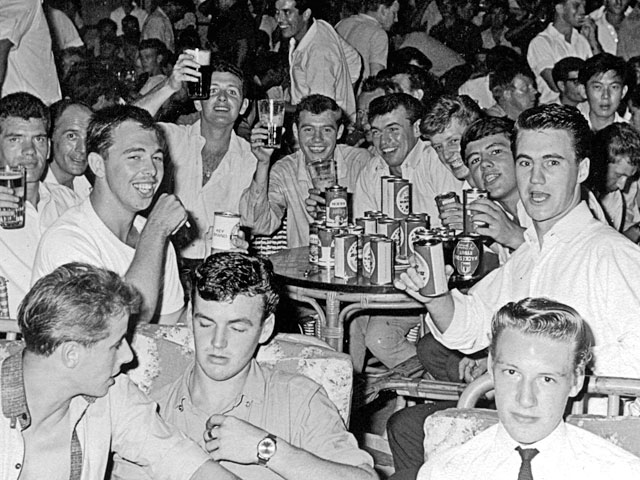
It was not all work, there was plenty of time for R & R, especially down in the city of Kuching, which had loads of bars. The Kwon Fook Bar, Peter Pan House, Honey Café, Palm Hotel, Rose Night Club, and Mayfair Hotel, all spring to mind. Most of these guys are Suppliers but there are a few Movers amongst them
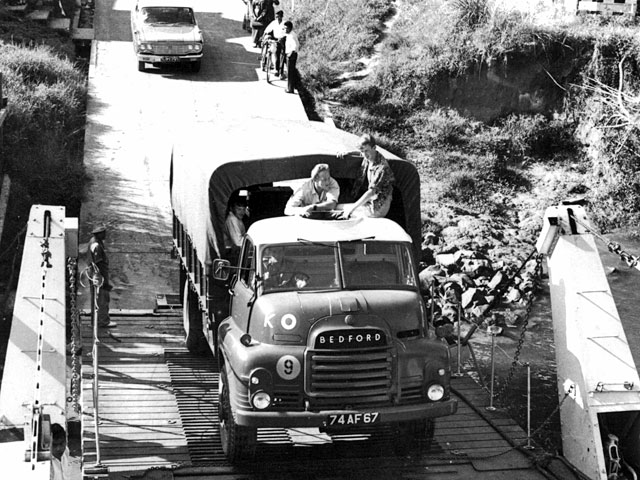
Time for a little R & R, and here we are on our way to a fresh water lake in a "borrowed" Bedford truck with a tea urn and some food.
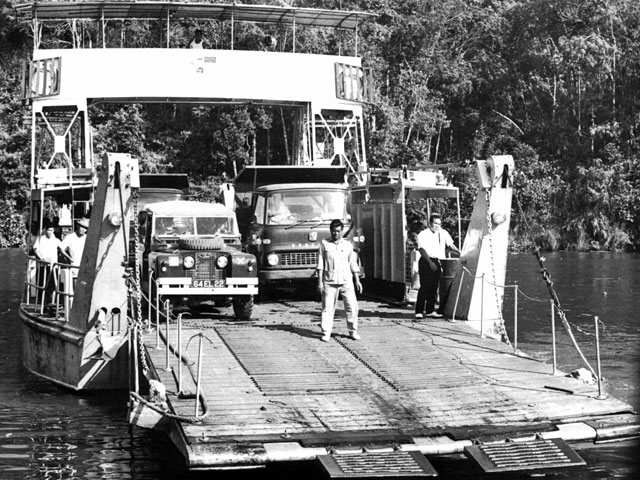
During the journey we had to cross quite a large river by way of a ferry. Normally there would have been a cost involved, but it was free to the Forces
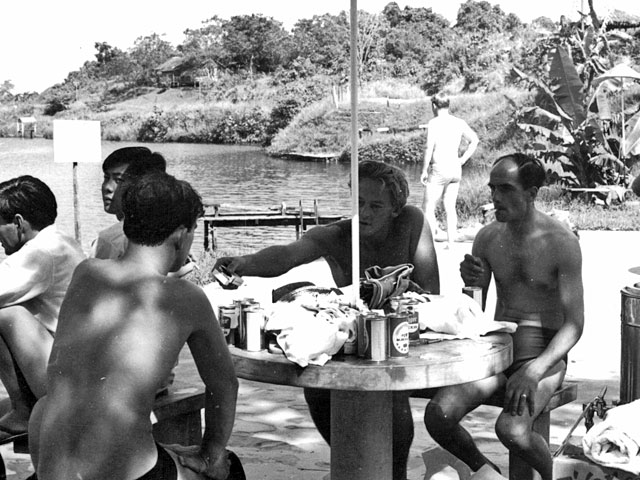
When we arrived at the lake we took the place over. It had a small bar but it didn’t carry enough stock for us, in any event ours was cheaper. Luckily the tea urn was not full of tea, it was spirits mixed with a little fruit juice. Went down a treat!
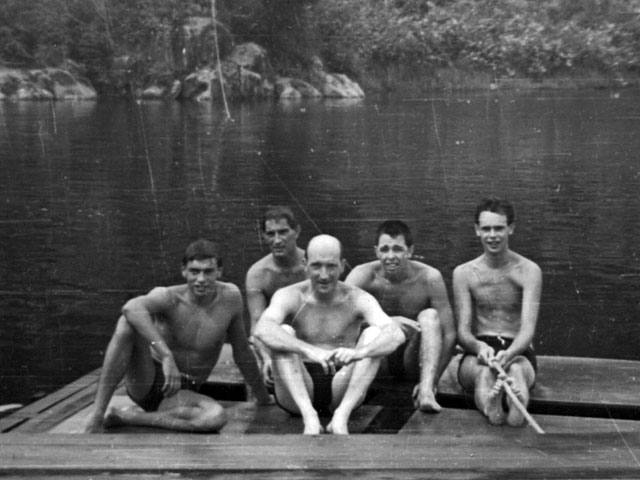
Feeling no pain!
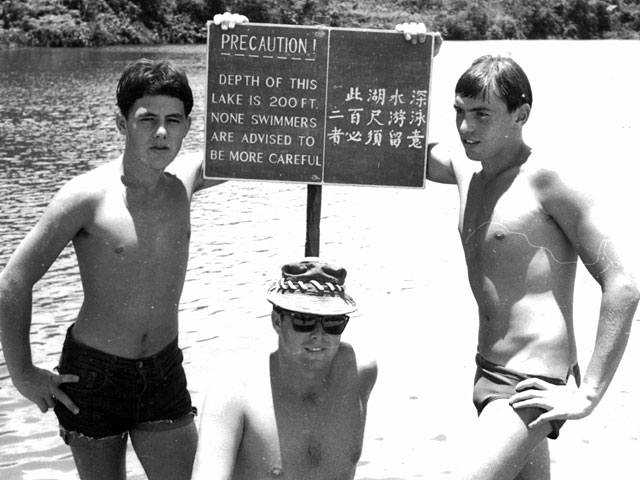
Notice the sign - I believe it should also read "If drunk". That's me on the left and my old mate Jonah on the right.
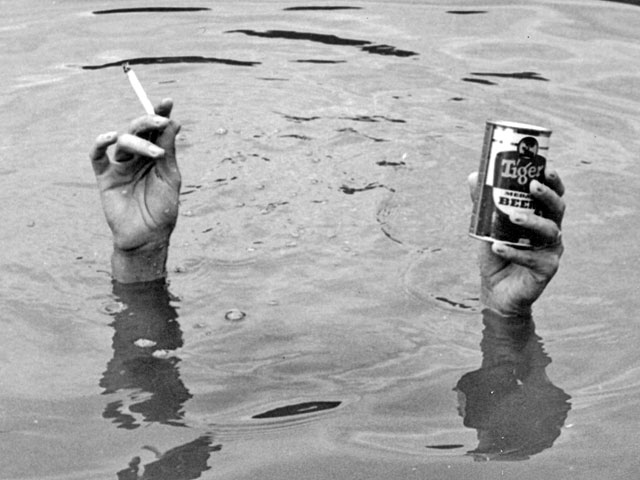
What a way to go…
We had this young Pilot Officer - you know the type, "know it all". He was into walking, I mean rambling, back in the UK. He decided to organise a "Ramble in the Jungle" (no pun intended). Anyway, it turned out he had to go midweek, and so he had a load of volunteers to go with him (anything for time off work). Little did we know what we were letting ourselves in for! We all had to wear our jungle outfits as you can see and draw a weapon each. But this time no bloody 303’s or five rounds. We picked sub machineguns and handguns both with plenty of ammo. I gathered the reason being that we had to be ready for trouble if we came across it.
Not only did we have weapons but also full survival gear, plus food and water and also a great big radio. We had a right weight to carry. The powers that be would not let us go otherwise - all this for a round trip walk of about ten miles.
Not only did we have weapons but also full survival gear, plus food and water and also a great big radio. We had a right weight to carry. The powers that be would not let us go otherwise - all this for a round trip walk of about ten miles.
Off we went out of the camp gates and turned left into the jungle. Only the Pilot Officer and the C.O. knew where we were going. We came upon a river that was far too deep to wade across. As luck would have it, along comes a native in a dug-out canoe, (just like in the movies!). There was no room for us all, so in goes the kit and one non-swimmer with the rest of us hanging onto the side. Off we went. Bear in mind the water was dark brown and we couldn’t see a ruddy thing. We were looking everywhere for anything that could bite.
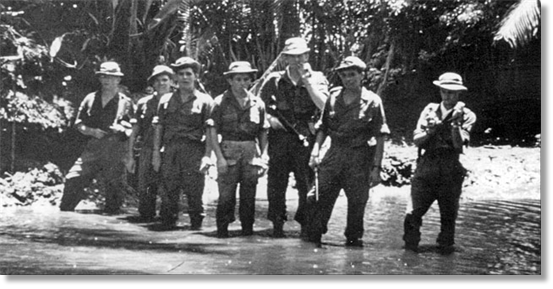
I felt something hit my leg. My first reaction was to scream and try to jump into the canoe. The rest panicked, the non-swimmer went one way and the kit went with him.
I finished up under the canoe with what I thought was some sort of bloody crocodile. I was by now in a right panic. I managed to draw out my machette and was just about to lash out when the canoe was lifted off of me. The croc turned out to be only a rucksack.
We had drifted onto a sand bank. Everybody was killing themselves with laughter except me and the non swimmer, who, by the way, learnt how to swim that morning. It turned out one of the others had deliberately touched my leg for a reaction from me and he got it in spades! I was still holding the machette and I went for him but he was quicker than me and ran off into the jungle. I let him go, anyway it was snack time. He returned a little later but got no food.
On we went. By now we had been struggling, not walking (it’s harder than you think), for about seven hours. We finished up in a Malay longhouse somewhere. This turned out to be half a mile from Kuching City and only five miles from camp. We had been walking in a complete circle, and it felt like fifty miles. We found a road and our priority was to seek out a bar. After a few beers we had a good laugh but never ever again did I go back into that jungle!
I really enjoyed my tour but was glad to get home. One last thing, I mentioned Bugis Street earlier on. When we arrived back in Singapore, Jack wanted to see the sunrise over Bugis Street, so with no hesitation at all off we went knowing our flight wasn’t for another three days. We saw the sunrise o.k., three of them, came back broke. But what memories!
I’ve still got my GSM somewhere; bring it out now again - memories…
I finished up under the canoe with what I thought was some sort of bloody crocodile. I was by now in a right panic. I managed to draw out my machette and was just about to lash out when the canoe was lifted off of me. The croc turned out to be only a rucksack.
We had drifted onto a sand bank. Everybody was killing themselves with laughter except me and the non swimmer, who, by the way, learnt how to swim that morning. It turned out one of the others had deliberately touched my leg for a reaction from me and he got it in spades! I was still holding the machette and I went for him but he was quicker than me and ran off into the jungle. I let him go, anyway it was snack time. He returned a little later but got no food.
On we went. By now we had been struggling, not walking (it’s harder than you think), for about seven hours. We finished up in a Malay longhouse somewhere. This turned out to be half a mile from Kuching City and only five miles from camp. We had been walking in a complete circle, and it felt like fifty miles. We found a road and our priority was to seek out a bar. After a few beers we had a good laugh but never ever again did I go back into that jungle!
I really enjoyed my tour but was glad to get home. One last thing, I mentioned Bugis Street earlier on. When we arrived back in Singapore, Jack wanted to see the sunrise over Bugis Street, so with no hesitation at all off we went knowing our flight wasn’t for another three days. We saw the sunrise o.k., three of them, came back broke. But what memories!
I’ve still got my GSM somewhere; bring it out now again - memories…

More Relevant Stuff
This Newsletter is Dedicated
to the Memories of:
Bill Young (RAF)
and
Bob Therrien (RCAF)
to the Memories of:
Bill Young (RAF)
and
Bob Therrien (RCAF)
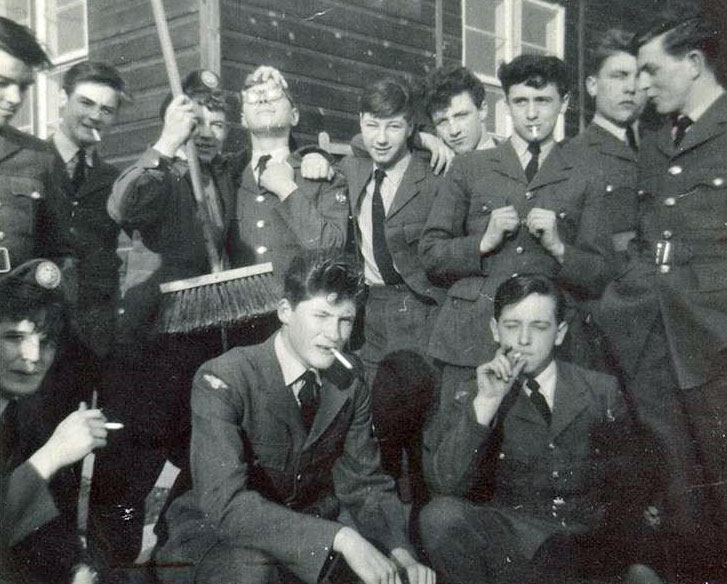
15 and 16 year old Boy Entrants of the 50th Entry, Supplier General, Hereford, 1963. Standing - Dave Breckon, John Billingsley, Geordie Orr, John Calvert, Alex Angus, Tony Dunphy, Bobby Atcheson, Bunny Kramer, Connor Nannery. Kneeling - Tony Gale, Colin Hawes and John Anderson
Think you know how to polish boots?
How the border between India and Pakistan is closed, every day
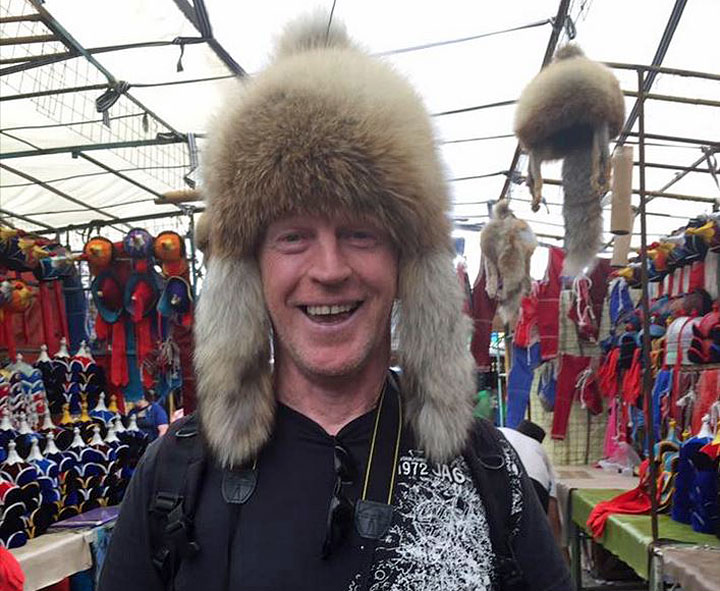
Paul Lemarshall (RAAF) on vacation in Ulaanbaatar, Mongolia
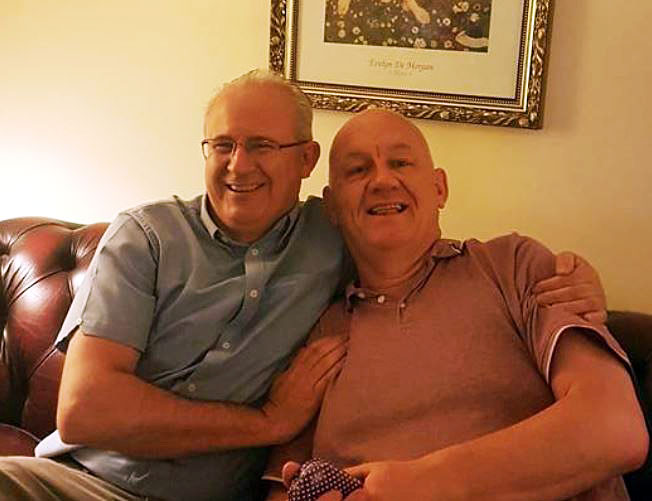
Getting cosy - Steve Smith and Steve Cross (RAF) not seen each other since 1981
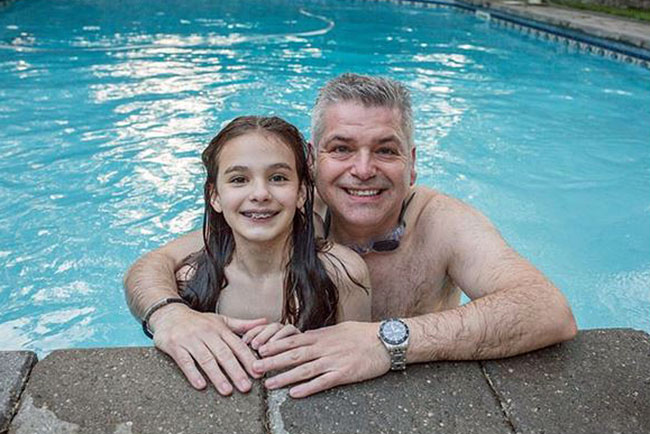
Chris Clarke (RAF) with former rug-rat Charlotte swimming in Burlington, ON
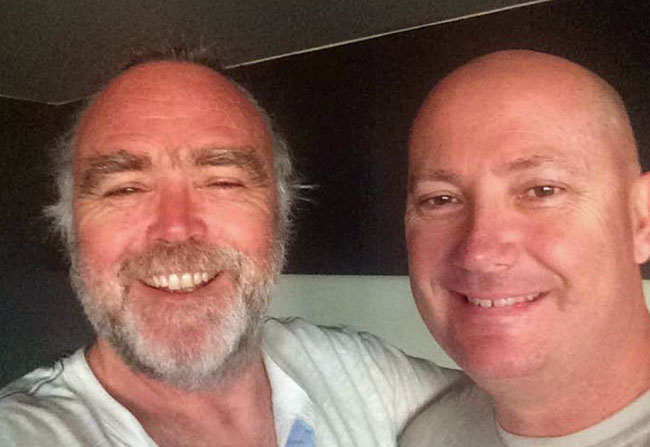
Bruce Donnelly and David Sheen (RAAF) met up in Ipswich, QLD recently
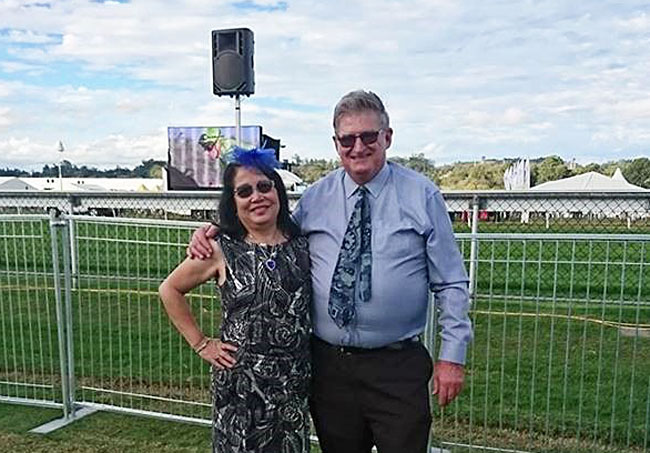
Upper management Joyce (aka Cheng) with Vic Smith (RAAF) at Ipswich, QLD
From: Ian Berry, West Swindon
Subject: Contact from RAF MAMS Association
Subject: Contact from RAF MAMS Association
Hi Tony,
Just returned from my first visit to Russia (St Petersburg) on a ship... Glad I was born in the West!
The following e-mail was received from Eric Batty's eldest son and he is seeking any contact with anyone who remembers him or his father. Can you publish?
Ian
Just returned from my first visit to Russia (St Petersburg) on a ship... Glad I was born in the West!
The following e-mail was received from Eric Batty's eldest son and he is seeking any contact with anyone who remembers him or his father. Can you publish?
Ian
---------- Original Message ----------
From: Andrew Tiny <atiny50@gmail.com>
Subject: Contact from RAF MAMS Association
Hello,
Just found your site, I am the eldest son of W/O Eric Batty, we were based in Cyprus in the conflict, I would so love to be in contact with my RAF family again, so many memories.
Thanks
Andrew
From: Andrew Tiny <atiny50@gmail.com>
Subject: Contact from RAF MAMS Association
Hello,
Just found your site, I am the eldest son of W/O Eric Batty, we were based in Cyprus in the conflict, I would so love to be in contact with my RAF family again, so many memories.
Thanks
Andrew
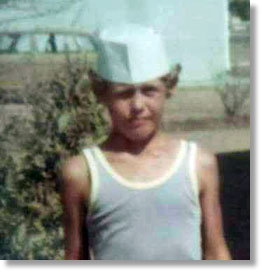
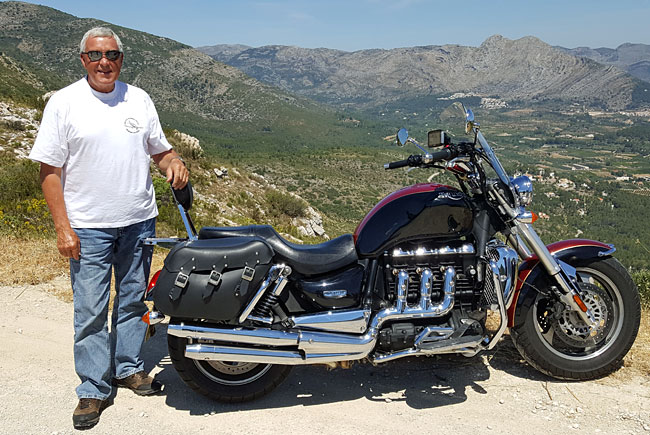
Rob Davies (RAF), along with his Rocket III Classic and a bunch of old pharts of a similar mind, recently undertook a motorcyling tour of Spain. Their route from the UK was Calais - Limoges (2 nights) - Valencia (1 night) - Denia (4 nights) - Zaragoza (1 night) - Santander (1 night) - then home
From: Dave Brixey, Wellington, Somerset
Subject: Family request
Hi Tony,
Ì'm after a bit of space in your next issue of the OBB please. Bit of a tale to tell, but bear with.
I lost my mother last year unexpectedly, then my wife lost her step father a little over 13 months later, in late February. Upshot is we now have just my mother in law, Dusty, left.
Unfortunately Dusty has just been diagnosed with untreatable and inoperable bowel cancer. She is putting a brave front on (former WREN, so not unexpected behaviour), but she's written a bucket list.
Subject: Family request
Hi Tony,
Ì'm after a bit of space in your next issue of the OBB please. Bit of a tale to tell, but bear with.
I lost my mother last year unexpectedly, then my wife lost her step father a little over 13 months later, in late February. Upshot is we now have just my mother in law, Dusty, left.
Unfortunately Dusty has just been diagnosed with untreatable and inoperable bowel cancer. She is putting a brave front on (former WREN, so not unexpected behaviour), but she's written a bucket list.
Some silly, some serious, some unachievable, some easily acheivable and that is where you and my military family come in.
She was a keen traveller and would love to get postcards from all our far-flung family. Anyone willing to send her a postcard please e-mail davidpbrixey@gmail.com and I'll reply with her address.
Many thanks
Dave & Jeni
She was a keen traveller and would love to get postcards from all our far-flung family. Anyone willing to send her a postcard please e-mail davidpbrixey@gmail.com and I'll reply with her address.
Many thanks
Dave & Jeni
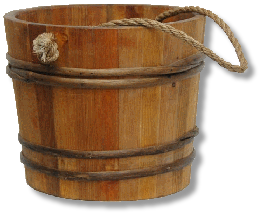
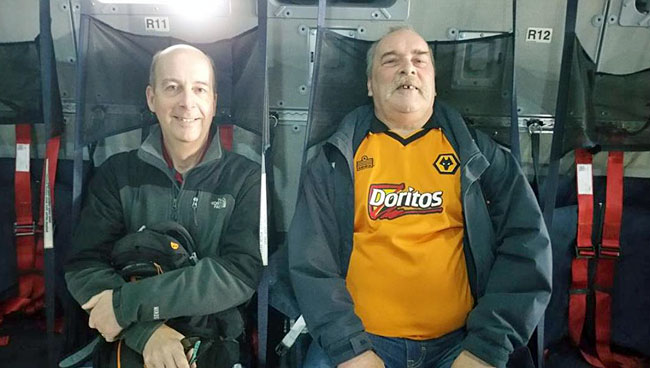
Mick Goater (RAF) on the right, sitting next to his brother-in-law, on the A400M Atlas at the Cosford Air Show recently. He said, "These seats are far too nice for a military transport and the A400M is much bigger than I had expected."
From: Sam Mold, Brighton and Hove
Subject: RAF Biggin Hill Chapel
Dear Tony & OBA Members,
I just signed the petition "Protect Biggin Hill St George's RAF Chapel of Remembrance" and wanted to ask if you could add your name too.
This campaign means a lot to the many who served in the RAF and the more support we can get behind it, the better chance we have of succeeding. You can read more and sign the petition here:
http://you.38degrees.org.uk/petitions/protect-biggin-hill-st-george-s-raf-chapel-of-remembrance
Can you also take a moment to share the petition with others? It's really easy – all you need to do is forward by email the above link. Share on Facebook and Share on Twitter.
Happy emailing and thank you!
Sam.
p.s. I was posted to Biggin Hill in 1966 and found that apart from the orderly officer flag raising/lowering duties, his most important job of the day was to attend the chapel and turn a page in the Book of Remembrance mounted on a special dais. This book was a record of fighter pilots who were killed in WW2 and was treated with the utmost reverence.
Subject: RAF Biggin Hill Chapel
Dear Tony & OBA Members,
I just signed the petition "Protect Biggin Hill St George's RAF Chapel of Remembrance" and wanted to ask if you could add your name too.
This campaign means a lot to the many who served in the RAF and the more support we can get behind it, the better chance we have of succeeding. You can read more and sign the petition here:
http://you.38degrees.org.uk/petitions/protect-biggin-hill-st-george-s-raf-chapel-of-remembrance
Can you also take a moment to share the petition with others? It's really easy – all you need to do is forward by email the above link. Share on Facebook and Share on Twitter.
Happy emailing and thank you!
Sam.
p.s. I was posted to Biggin Hill in 1966 and found that apart from the orderly officer flag raising/lowering duties, his most important job of the day was to attend the chapel and turn a page in the Book of Remembrance mounted on a special dais. This book was a record of fighter pilots who were killed in WW2 and was treated with the utmost reverence.
Tony Gale
ukmamsoba@gmail.com
ukmamsoba@gmail.com







